LOVE IN THE AGE OF LONELINESS
Love in the Age of Loneliness
“We didn’t forget how to love. We forgot how to stay.”
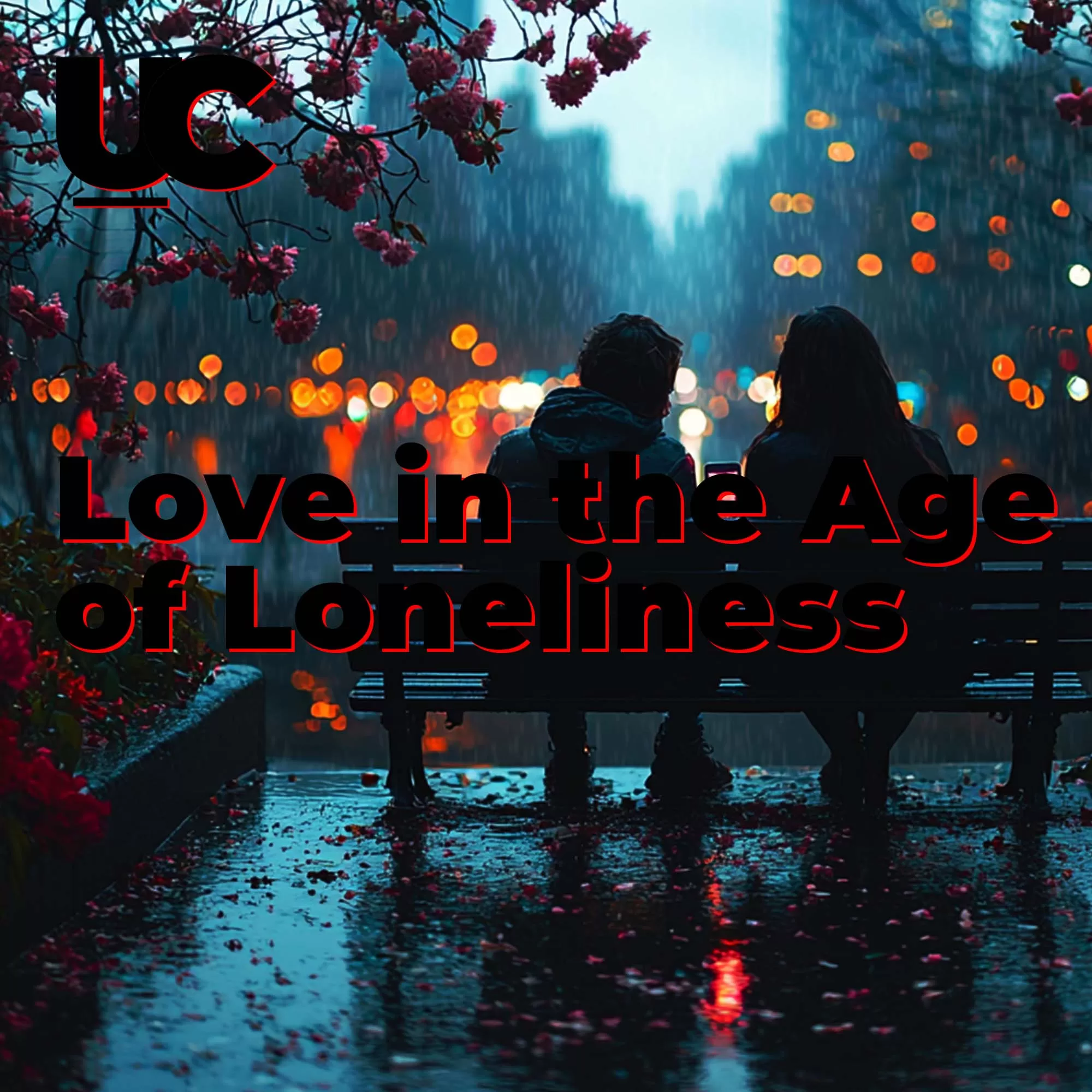
A slow, heavy walk through what it means to be human in a world built for performance. Love in the Age of Loneliness isn’t about chasing connection — it’s about coming home to yourself first, then finding the ones who can stay with the real you

The Ones We Became
“You can survive a long time without being seen — but it’s not the same as living.”
We didn’t mean to lose ourselves. We learned how to survive by shrinking, by performing, by staying half-visible. But somewhere under all the noise, the real parts of us are still waiting.

What We Thought Would Save Us
“No amount of noise can drown out the silence you carry inside.”
We thought busyness, success, and visibility could outrun the ache. We thought being wanted would be the same as being known. But real connection was never built on noise.

When the Silence Got Loud
“The noise keeps you moving. The silence shows you what’s missing.”
The real loneliness didn’t roar — it crept in. It lived in the spaces between all the noise we made to survive. And when the silence got too loud to ignore, we had to finally listen.

Where We Forgot to Look
“What you’re aching for was never out there — it’s been waiting in the places you left behind.”
We thought connection lived out there — bigger cities, better circles, shinier lives. But we forgot to look for it in the slow, heavy spaces we were too scared to stay inside.

Why We Learned to Hide
“You can only hide from the world for so long before you forget how to be found.”
We didn’t hide because we were weak. We hid because it stopped feeling safe to be seen. But real healing starts when we stop abandoning ourselves to make other people comfortable.

How We Start Coming Back
“The real miracle isn’t that you heal. It’s that you stay real while you do it.”
Coming back to yourself doesn’t happen all at once. It’s a thousand stubborn choices to stay real when running would be easier — and to believe you’re worth staying for, even when it hurts.

"You’ll know who matters by who stayed when there was nothing left to perform."
At the end of it all, it isn’t who cheered the loudest — it’s who stayed when you stopped performing. Including you. Especially you.
At the end of it all, it isn’t who cheered the loudest — it’s who stayed when you stopped performing. Including you. Especially you.
Privacy Ain’t Private: How Your Apps Are Quietly Mapping Your Life
The Ripple Effect
-News and Commentary-
Privacy Ain’t Private: How Your Apps Are Quietly Mapping Your Life
- Home
- Articles Posted by (
- Page 3 )
Share On Social
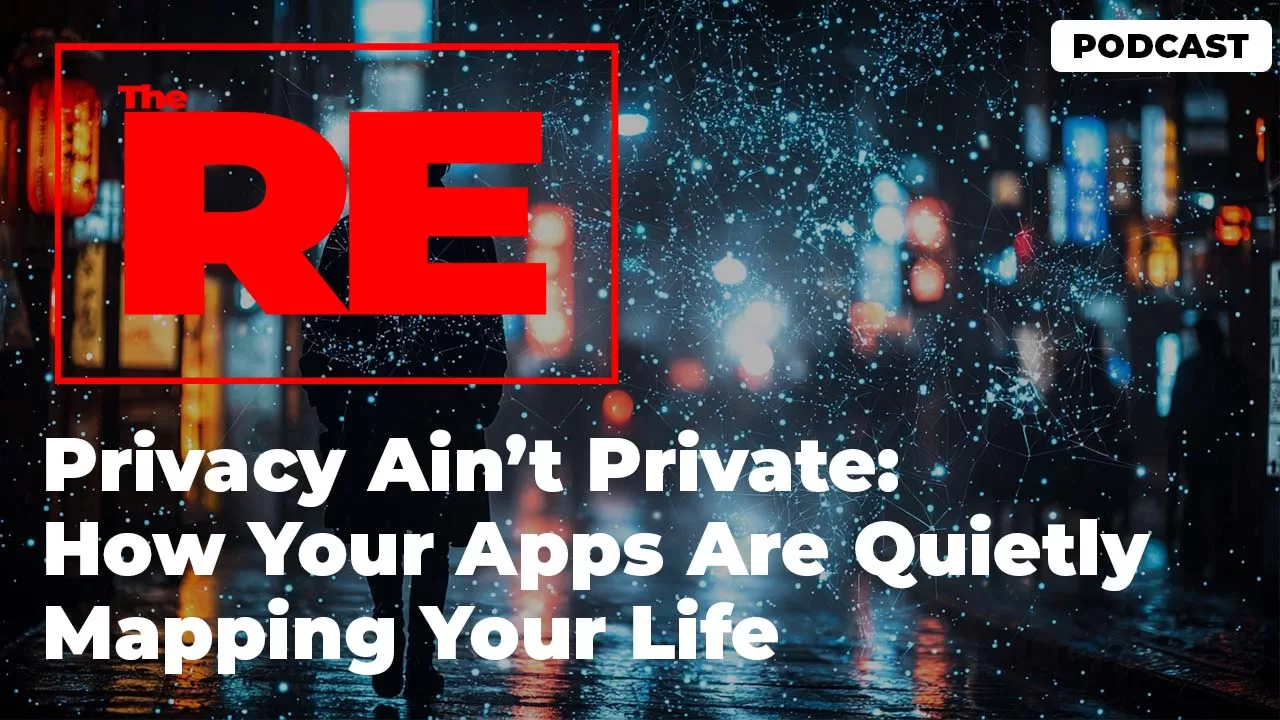
Today in The Ripple Effect we are discussing how privacy is no longer private and how your apps are quietly mapping your life.
We like to believe we are in control. We like to believe that the choices we make about what we share and what we keep to ourselves are ours alone. But the truth is more complicated. And it is far more unsettling.
Every day without thinking about it we trade pieces of ourselves for convenience. We install an app to check the weather. We sign up for a rewards card at the grocery store. We scroll through social media while we wait in line for coffee. And each time we do we give something away.
It is not just what we post. It is not just what we click. It is not just the pictures we share or the emails we send. It is where we go. It is what we buy. It is who we call and how long we talk to them. It is the patterns of our lives mapped in invisible ink.
Your phone knows where you sleep. It knows where you work. It knows which stores you visit and which route you take home. It knows how often you exercise and what hours you tend to be awake. It knows when you slow down at a certain intersection every morning. It knows when you linger outside a store window without even walking inside.
And all of that information is not just sitting harmlessly on your device. It is being harvested. It is being bought and sold. It is being stitched together with data from thousands of other sources to create a picture of you more detailed than anything you have ever shared on purpose.
They call it metadata. And it is one of the most valuable commodities on earth right now.
Apps that seem free are not actually free. You are paying for them with your life in tiny quiet transactions you cannot see. And even when you think you are being careful. Even when you adjust your settings and turn off permissions. There are ways around it. Workarounds. Loopholes. Shadow profiles built from crumbs you did not even know you were dropping.
And once your data is out there. You cannot pull it back.
You do not get a say in who sees it. You do not get a say in how it is used. You do not get a warning when it is bundled and sold to a company you have never heard of. Or handed over to a government agency without your knowledge.
We used to think privacy meant keeping secrets. Now privacy means trying to survive in a world where every move is recorded whether you like it or not.
The scariest part is how normal it feels now. We have been trained to accept it. To laugh it off when an ad pops up for something we were just thinking about. To shrug when our phone suggests the exact place we were about to drive to. To tell ourselves it is just how things work now. But normal does not mean harmless. And the more we accept it. The more power we hand over to people and systems that do not have our best interests at heart. Because when companies and governments know everything about you. When they can predict your fears and your habits and your weaknesses. It is not just about selling you sneakers or suggesting a movie. It is about control.
It is about shaping what you see and what you believe. It is about nudging you to make choices without ever realizing you are being nudged.
It is about building a world where your digital shadow walks ahead of you and makes decisions before you even understand what is happening. And once that becomes the norm. It is almost impossible to walk it back.


The technology that watches us did not come with a warning label. It did not arrive with a red flag waving in the sky. It slipped into our lives like a friend. It offered help. Directions to a restaurant. Reminders for a birthday. A better route home when traffic got heavy. It made itself indispensable before we even knew the cost. And now we live inside a trade we never fully agreed to. We pay with our habits. We pay with our patterns. We pay with our most private moments. Location services keep running even when you tell them not to. Apps track your Bluetooth signals to guess who you were near. Photo metadata reveals where you were when you took that perfect shot. Fitness trackers collect your heart rate your sleep cycles your stress patterns. Even something as simple as a flashlight app can ask for permission to access your contacts your files and your location. You have to ask yourself. Why would a flashlight need to know where you are.
Because it was never about the flashlight. It was always about the data.
The companies collecting it say it is anonymized. They say it cannot be tied back to you personally. But study after study shows how easy it is to re-identify people from so-called anonymous data with frightening accuracy. You are not just a blip in a system. You are a full profile waiting to be sold. And the people buying your data are not always who you think. It is not just advertisers selling shoes and phone cases. It is insurance companies looking to predict health risks. It is lenders calculating how much of a risk you are. It is political groups tailoring messages to manipulate your emotions. It is law enforcement agencies skirting around warrants by buying access to commercial databases. It is private investigators finding ways to track targets without ever filing legal paperwork. It is authoritarian regimes learning how to tighten control without lifting a finger. Once the infrastructure is built it does not ask permission to grow. It simply grows.
And it changes us too. It teaches us to censor ourselves. To stay safe by staying quiet. To second guess what we search what we post what we read. It chips away at curiosity. It trains us to live smaller lives because we are never fully sure who is watching.
This is not paranoia. It is reality. It is happening now. And it will keep happening as long as the machines hum quietly in our pockets and purses and homes.
Some people will say. I have nothing to hide. But privacy is not about hiding wrongs. It is about preserving dignity. It is about the right to exist without being constantly scrutinized. It is about keeping some part of your life safe from being harvested and packaged and sold. If you do not believe you need privacy. Think about the people who do. Journalists protecting sources. Whistleblowers risking careers to expose corruption. Victims of abuse trying to rebuild their lives. Activists organizing for causes that do not have popular support. Privacy is not about being perfect. It is about being human.
And when we give it away without a fight we lose more than just control over our data. We lose a piece of ourselves. We lose the ability to choose who we are when no one is looking.
It is not too late to push back. But it starts with understanding just how much we have already given away. And it means recognizing that convenience is never free. There is always a cost. There is always a trade. And the real price is paid quietly in ways we will only see when we have already lost more than we realized.
Privacy was never supposed to be a privilege. It was supposed to be a right. It still should be.
But it will not be handed back to us. We will have to fight for it. One choice at a time. One refusal at a time. One demand for better at a time. Because the truth is simple. If we do not own our information. Someone else will. And they will own us too.

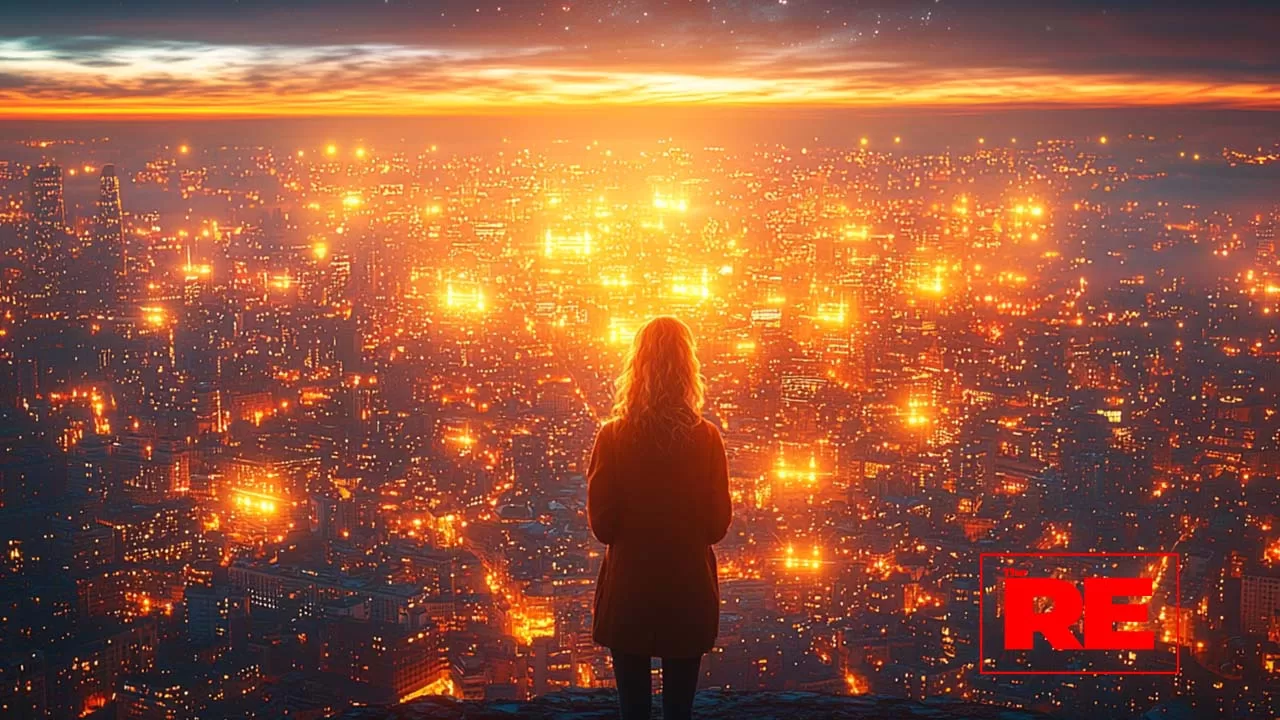
"Truth survives because of you. Make your gift count."
Every dollar helps us fight misinformation and dig deeper into stories that matter.
The Death of Local News: Why Your Hometown Might Be Flying Blind
The Ripple Effect
-News and Commentary-
The Death of Local News: Why Your Hometown Might Be Flying Blind
- Home
- Articles Posted by (
- Page 3 )
Share On Social
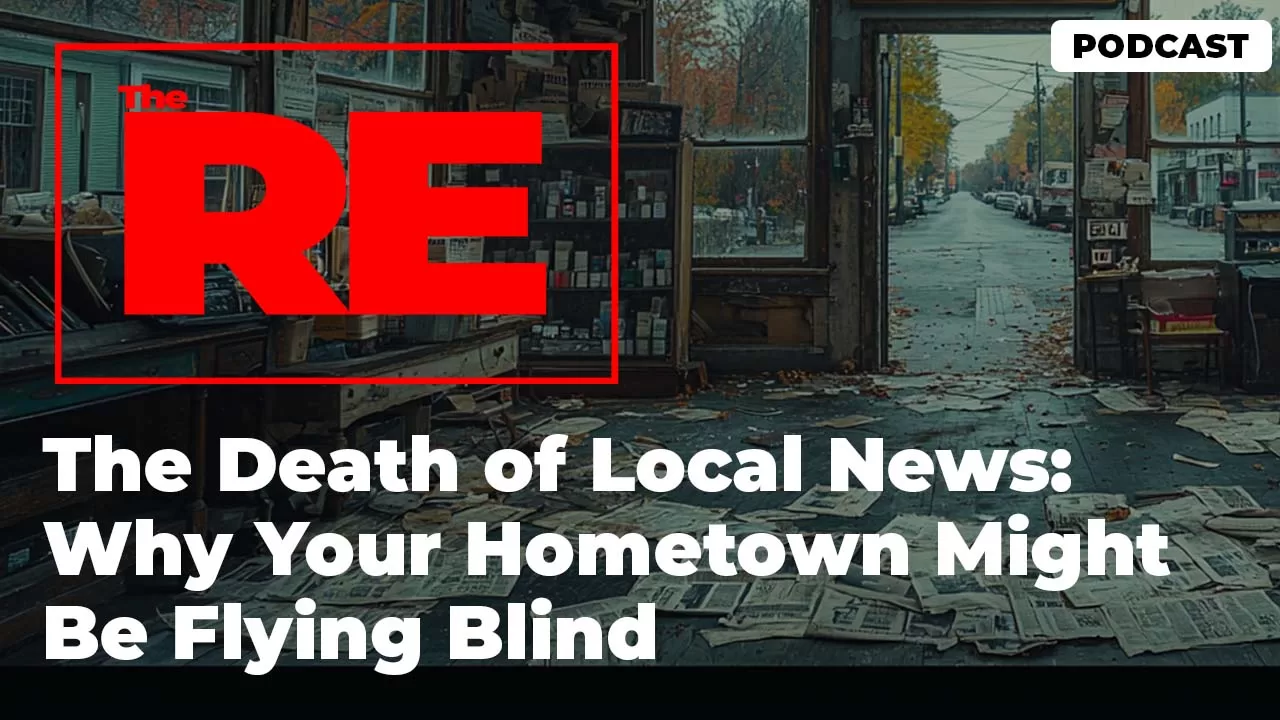
Today in The Ripple Effect we are discussing the death of local news and why your hometown might be flying blind. There was a time when the local newspaper hit your porch before the sun even thought about rising. When you could walk into a diner and hear people arguing about what they read that morning. Not just national headlines but school board meetings and zoning laws and which high school team was heading to the championship. Local news was not just information. It was the stitching that held communities together.
Now the front pages are thinner. The bylines are vanishing. And the silence is louder than we realize.
Across America small newspapers are folding at a terrifying pace. Over two thousand local papers have shut down since 2005. Whole towns now sit in what researchers call news deserts. No reporters covering city councils. No watchdogs following the money. No journalists sitting in courtrooms or school board meetings asking hard questions that need to be asked.
It is easy to shrug it off and think it does not matter. There is always the internet. There is always social media. There is always someone posting something somewhere. But those places do not fill the same role. They are loud but they are not accountable.
They are fast but they are not thorough.
Local news was never just about information. It was about shared reality. It was about telling you when the water was not safe to drink. Or when a new business was coming to town. Or when someone needed help after a fire or a flood. It was about building community muscle memory. It was about saying you live here and you deserve to know what is happening here.
When that goes away. When no one is paying attention to the small things. The big things start to slip too.
Corruption gets easier. Budgets get rubber stamped. Public officials make decisions behind closed doors because nobody is there to ask why. And slowly quietly the sense of being part of something bigger than yourself starts to erode.
You do not know who your school board members are anymore. You do not know how your tax dollars are being spent. You do not know if your police department is buying military gear or if your mayor just signed a deal with a company that has a bad record. You do not know because no one told you. Because no one was there to find out.
The national news will not catch it. They are chasing the next big crisis. The next trending topic. The next ratings bump. They will not send a team to cover your city council sneaking through a zoning change that lets a developer bulldoze the last green space in your neighborhood. They will not send a reporter when your public hospital quietly cuts services because a private equity firm bought it and wants to juice the profit margins.
Only local journalism can do that. And when it dies. The people lose the power to see their own lives reflected back at them.
The slow collapse of local news is not just an accident. It did not happen overnight. And it did not happen because people stopped caring. It happened because the business model broke. It happened because small papers that used to thrive on classified ads and local business sponsorships were gutted when giants like Craigslist and Facebook moved in and took the revenue without putting anything back.
It happened because private equity firms and hedge funds started buying newspapers not to run them better but to strip them down. They slashed newsrooms. They cut investigative teams. They merged papers together and sold off the assets like real estate deals. They treated journalism like a spreadsheet. If a reporter could not produce immediate profits they were cut. If a bureau cost money to run it was closed. And so slowly painfully the ability of local papers to do real journalism started bleeding out.
What replaced it was wire service content. Reposted national stories. Fluff articles designed to fill space without asking hard questions. The faces in the newsroom changed. Then the newsroom itself shrank. Then one day it was gone.
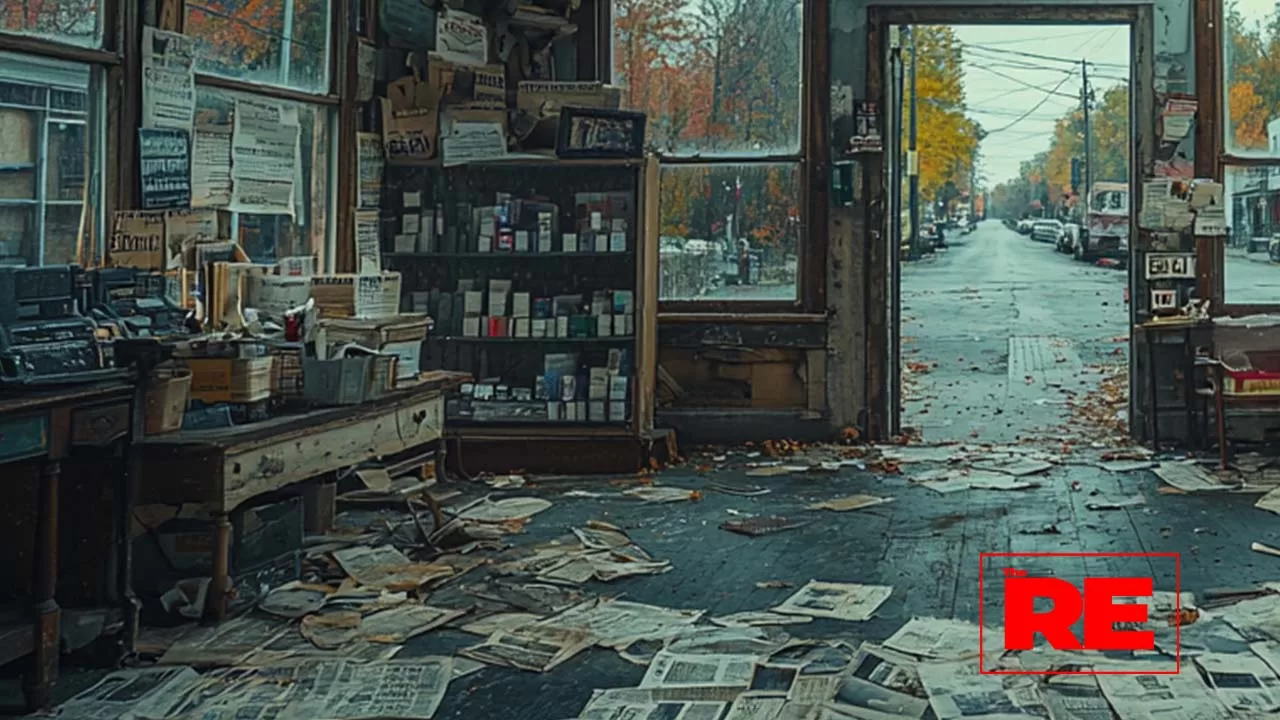
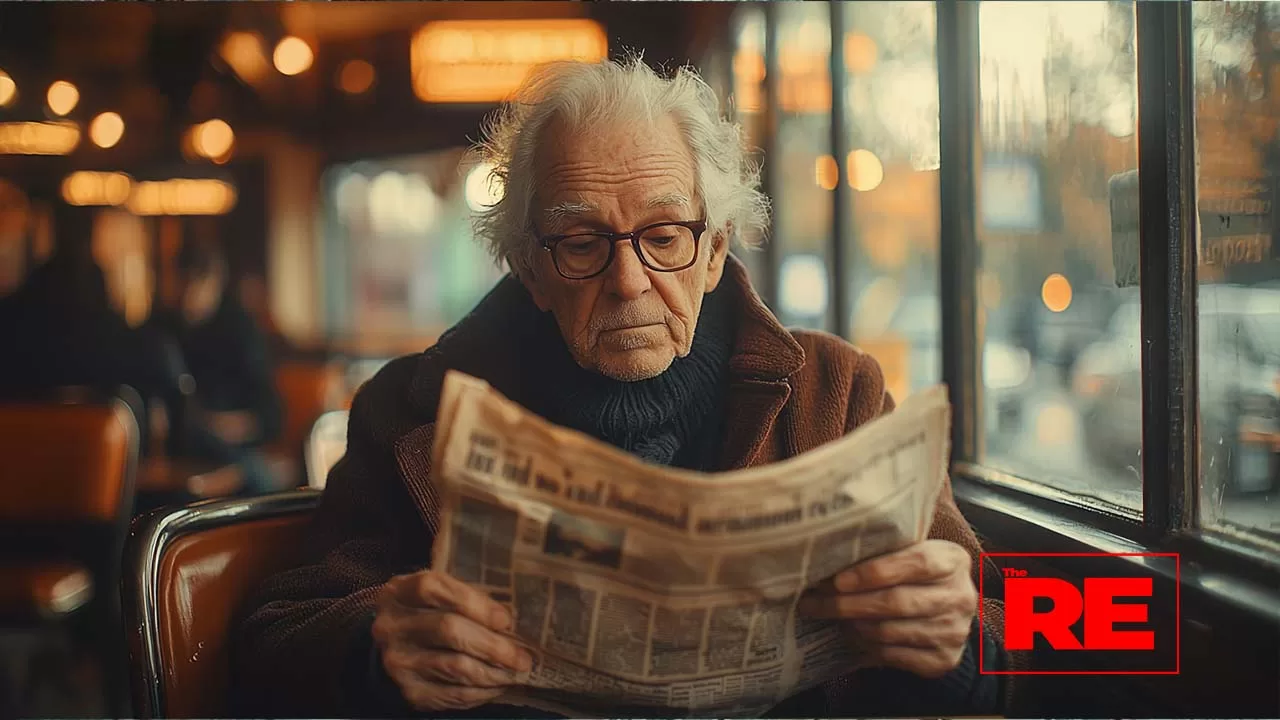
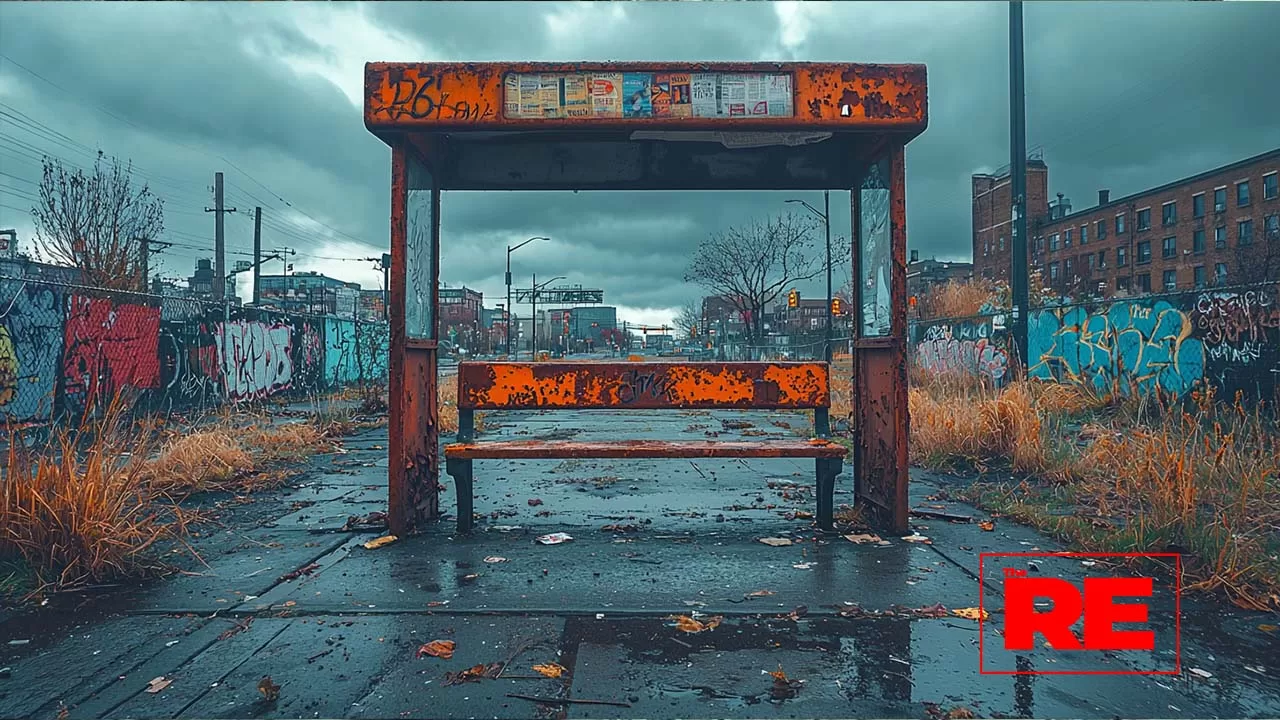
In some places nonprofit models have tried to fill the gap. New local news startups have popped up online. Some of them are doing incredible work against impossible odds. But they are fighting an uphill battle. They are often understaffed and underfunded. And while they work to rebuild the trust and reach that old newspapers once had the forces dismantling local journalism keep moving faster.
Big tech platforms benefit from the chaos. They make billions serving up news without paying for its creation. They control what you see when you search for a topic. They decide what trends and what gets buried. They became the new front page without taking on the responsibility that came with it. They are not evil in some cartoon villain way. But they are built to maximize clicks not to serve democracy. They are designed to keep you scrolling not to keep you informed.
And when the watchdogs are gone bad actors move in. Politicians with no fear of scrutiny. Corporations with no fear of exposure. School boards and police departments and mayors who know nobody is watching. It is not about catching every scandal. It is about preventing them from happening in the first place because people know someone is paying attention.
Without local news the darkness grows quietly. Deals get dirtier. Discrimination gets buried. Public money gets wasted. The community starts losing the sense that their voice matters because they stop seeing it reflected anywhere.
And the damage is generational. Kids growing up today in news deserts are less likely to vote. Less likely to be civically engaged. Less likely to feel connected to their own towns. Democracy is not just national debates. It is local decisions about schools and roads and parks and safety. When local news disappears democracy withers from the roots up.
There are ways to fight back. Subscribe to local papers if you still have them. Support nonprofit journalism. Share real reporting with your neighbors. Push for legislation that forces tech platforms to pay for the journalism they profit from. Teach your kids that information is not free. It costs real work by real people to find the truth.
Because if we do not defend local journalism now it will not come back later. And the cost will not just be measured in empty newsstands. It will be measured in stolen futures. In broken communities. In blind spots we never saw coming until it was too late.
The death of local news is not just a media story. It is a warning. A quiet unraveling. And if we do not pay attention the next headline we miss might be the one that could have saved us.

"Truth survives because of you. Make your gift count."
Every dollar helps us fight misinformation and dig deeper into stories that matter.
The Fragility of Freedom in the Digital Age
The Ripple Effect
-News and Commentary-
Today in The Ripple Effect, we are looking at a truth that many people sense but few want to face. Freedom in the digital age is not permanent. It is fragile. It is conditional. It is quietly being rewritten in real time by the technologies we use every day. We are not losing it all at once. We are giving it away, piece by piece, in exchange for convenience, entertainment, and a sense of belonging.
The Illusion of Infinite Freedom
When the internet first emerged, it promised something revolutionary. Unlimited information. Global connection. The democratization of speech, business, art, and politics. Anyone with a connection could speak to the world. Anyone with a good idea could find an audience.
For a while, that seemed true. Blogs exploded. Independent creators thrived. Activists organized across borders. But underneath the surface, power was consolidating. A handful of platforms grew faster and bigger than the wild early internet ever imagined. Google, Facebook, Amazon, Apple, and a few others became the new gatekeepers. They did not just connect users to information. They shaped which information users would see, how it would be ranked, and what would be rewarded.
Freedom on the internet started to look a lot more like freedom inside a shopping mall. You could walk around. You could look at what you wanted. But you were still inside a space someone else owned, governed by rules you did not write, enforced by algorithms you could not see.
Data as a Weapon
Freedom requires privacy. Without it, true autonomy disappears. Yet in the digital age, privacy has been quietly traded away. Every click, every scroll, every keystroke becomes part of a massive data profile. That profile is bought, sold, analyzed, and used to predict and influence behavior.
At first, this seemed harmless. Personalized ads. Targeted recommendations. Smarter search results. But data does not just sell products. It shapes narratives. It decides which stories rise and which vanish. It tailors news feeds not to what is important, but to what is profitable. It builds psychological profiles that can be used to sway elections, seed division, and even predict protest movements before they start.
When data is weaponized, freedom is compromised. Choices feel free, but they are often carefully nudged by forces users cannot see and would not easily recognize.
The Rise of Digital Authoritarianism
It is tempting to think of digital threats to freedom as something happening elsewhere. In authoritarian countries, surveillance technology is used openly. Cameras on every corner. Social credit scores. Internet blackouts. Arrests based on online activity.
But the line between open democracies and digital authoritarianism is thinner than it appears. In many Western countries, governments quietly expand surveillance powers under the banner of national security. Companies cooperate with law enforcement. Private sector data mining blurs with public sector surveillance. The infrastructure for control already exists. It is just waiting for the right political moment to be turned fully inward.
Freedom is not just about what is technically allowed. It is about what is practically possible. When speaking out risks algorithmic deplatforming, when organizing risks data profiling, when dissent risks digital erasure, freedom becomes a theory more than a reality.
The Shrinking Public Square
Another threat to digital freedom is the disappearance of true public spaces online. Early internet forums, open comment sections, and peer-to-peer networks have been replaced by curated feeds, branded experiences, and monetized communities. Algorithms filter who gets heard. Monetization pressures favor sensationalism over substance. Terms of service documents, thousands of words long, govern every interaction.
The new digital town squares are privately owned and profit driven. Free speech exists, but only within the boundaries of brand safety and shareholder value. Communities can be demonetized, throttled, or deleted without warning. Appeals are slow and opaque. Decisions are often final.
This does not just impact controversial figures. It shapes the very definition of acceptable discourse. It creates chilling effects where users self censor not because they must, but because they fear losing access to the platforms that now define modern life.


The Psychological Cage
Perhaps the most insidious erosion of freedom happens not externally, but internally. Constant surveillance, even if passive, changes behavior. Knowing that every post, every comment, every photo could be screenshotted, archived, or resurfaced years later leads to a kind of internalized censorship.
People begin to curate not just their public selves but their private thoughts. They perform for invisible audiences. They fear saying the wrong thing, liking the wrong post, or supporting the wrong cause. Freedom becomes less about the absence of external control and more about navigating a complex, shifting maze of unspoken rules.
In a surveillance society, conformity often becomes a survival strategy.
Small Choices, Big Consequences
The erosion of digital freedom rarely happens in dramatic moments. It happens through small choices. Accepting terms and conditions without reading them. Using platforms that harvest more data than necessary. Prioritizing convenience over control. Choosing engagement over reflection. Believing that because something is easy, it must be harmless.
Each small surrender does not feel like much. But collectively, they build a system where freedom is no longer the default. It is a privilege, granted by private companies, and contingent on behavior that fits the algorithm’s definition of acceptable.
The Way Forward
The good news is that awareness is growing. Encryption tools, decentralized platforms, and digital rights movements are pushing back. More users are demanding transparency, ethical data practices, and real choice. Some governments are beginning to regulate the excesses of tech monopolies, though often too slowly and with too many loopholes.
The future of digital freedom will not be decided by one policy or one technology. It will be decided by millions of small decisions made by users, builders, lawmakers, and communities.
Choosing privacy even when it is inconvenient. Supporting platforms that respect user rights. Advocating for laws that prioritize citizens over corporations. Building networks that resist centralization and promote real autonomy.
Freedom in the digital age will not survive on autopilot. It must be defended, rebuilt, and reimagined every day.
The Ripple Forward
The internet gave humanity an unprecedented gift, the ability to connect across distance, share ideas instantly, and build communities beyond geography. But every tool can be used or abused. Every freedom can be expanded or eroded.
The real question is not whether technology will shape the future. It is whether we will shape technology to serve freedom, or allow it to quietly reshape freedom to serve itself.
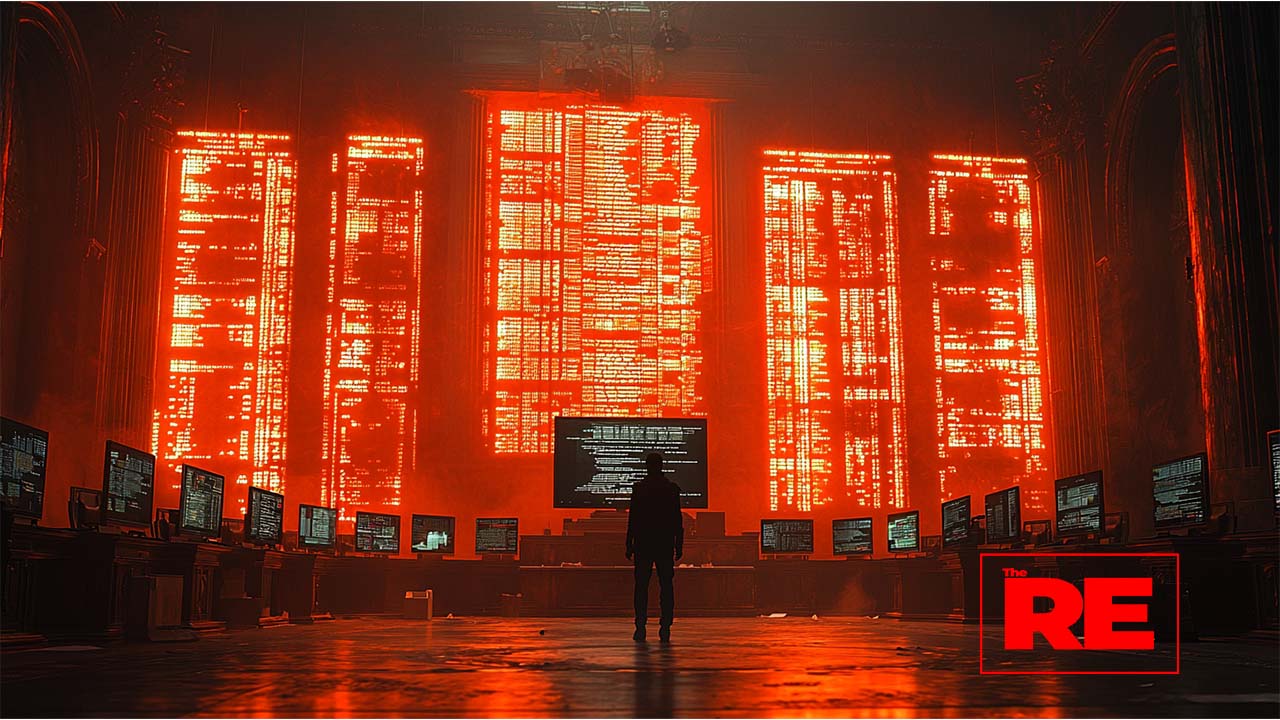

The Grind Myth
THE GRIND MYTH – SERIES OVERVIEW
The story of how hustle culture sold us survival and how we take our lives back.
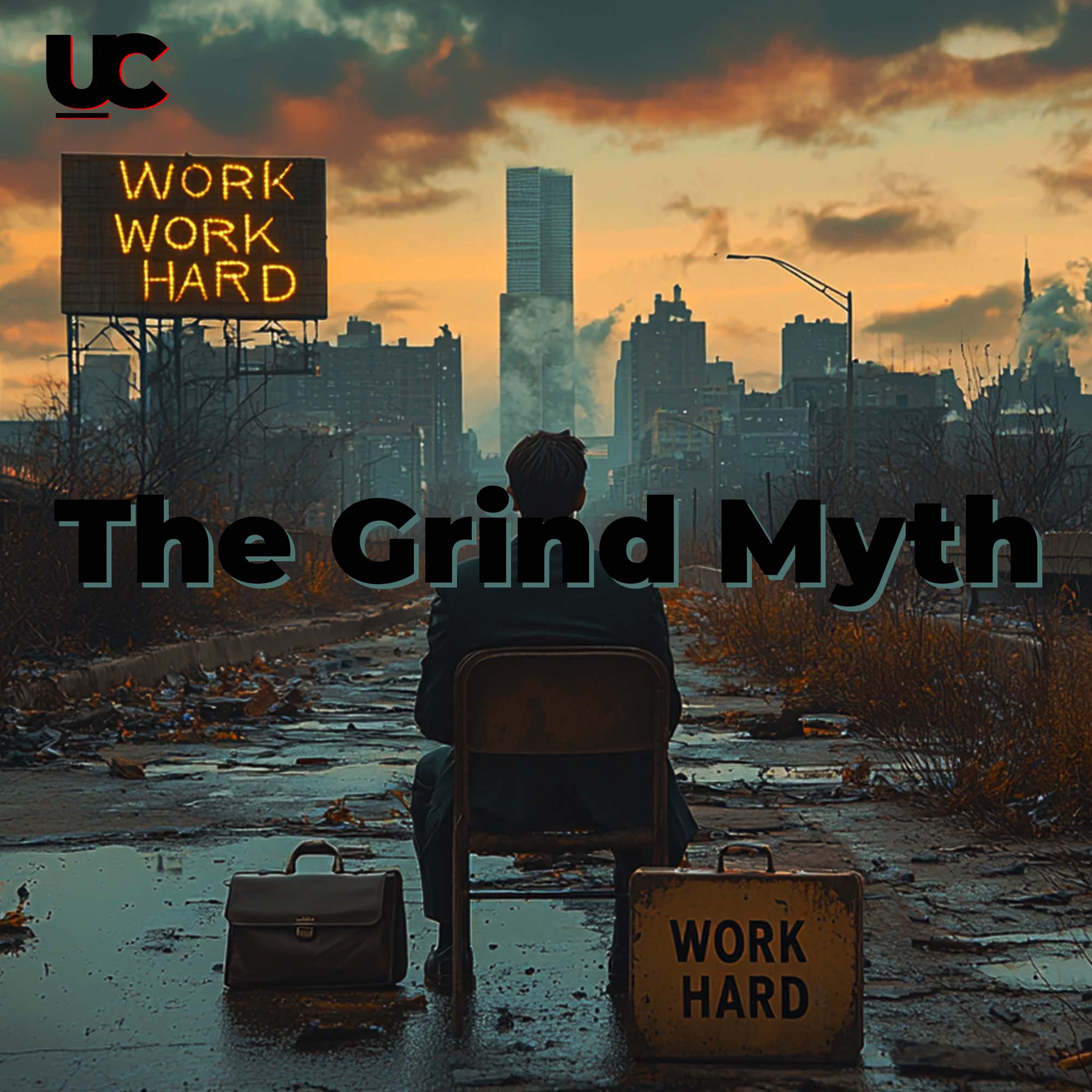
We were taught that hustle was holy. That sacrifice would set us free. That if we grinded hard enough, long enough, loud enough, we would finally earn our lives back. The Grind Myth is a seven-part excavation of that lie—where it came from, why it trapped us, and how we break its grip. From the dreams we bought to the cracks we couldn’t ignore, this series walks through the machinery of exhaustion, the illusion of success, and the quiet revolution of building differently. This isn’t a story about quitting. It’s about waking up. It’s about reclaiming what was always ours: time, presence, freedom.
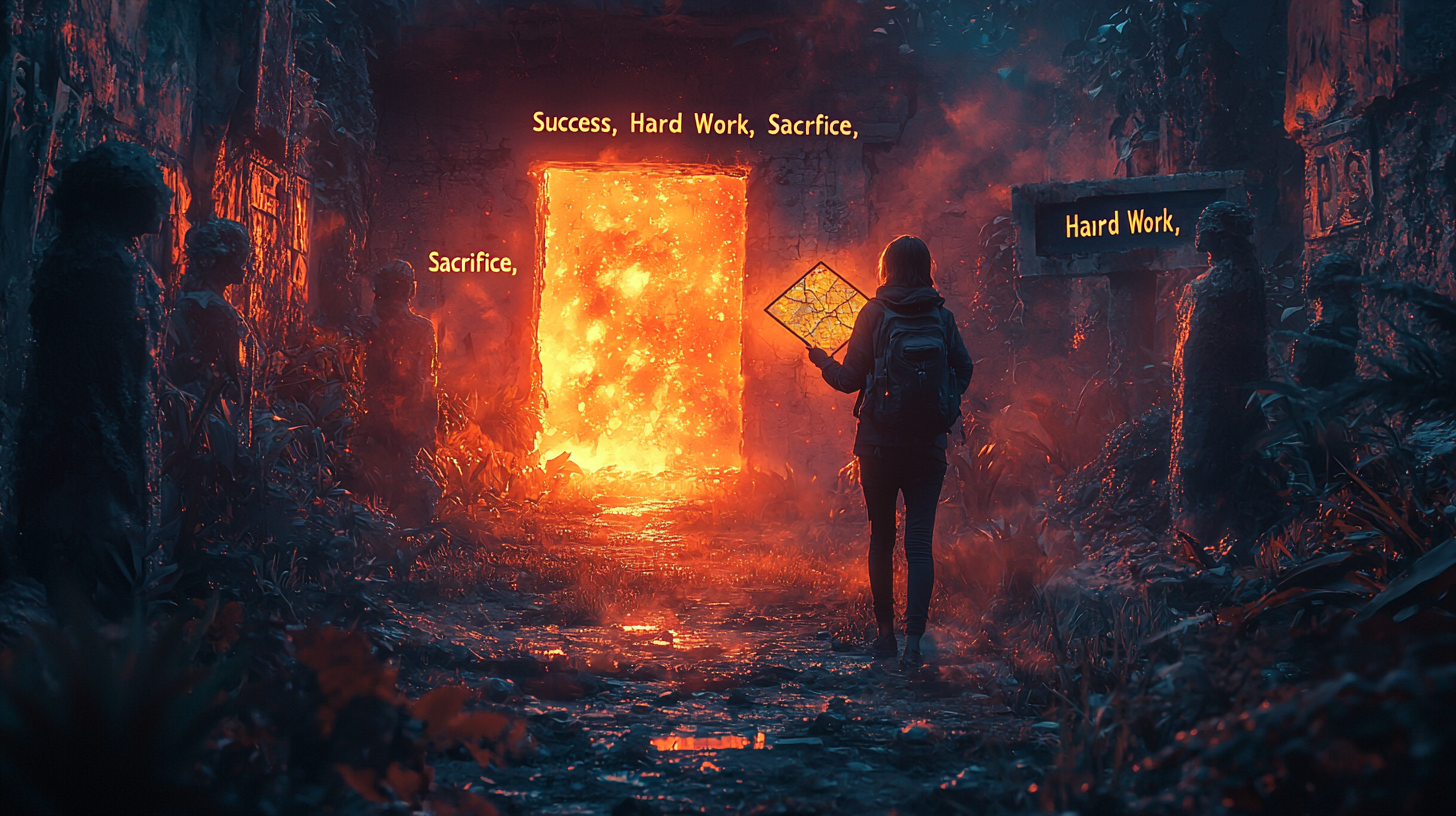
EPISODE 1 – THE DREAM WE BOUGHT
“The version of the dream we bought wasn’t freedom. It was obedience dressed up in gold.”
This episode traces the dream we were sold—the one that told us hard work would equal freedom. We explore how ambition became a leash, how sacrifice became survival, and how the finish line kept moving even as we gave everything we had to chase it.
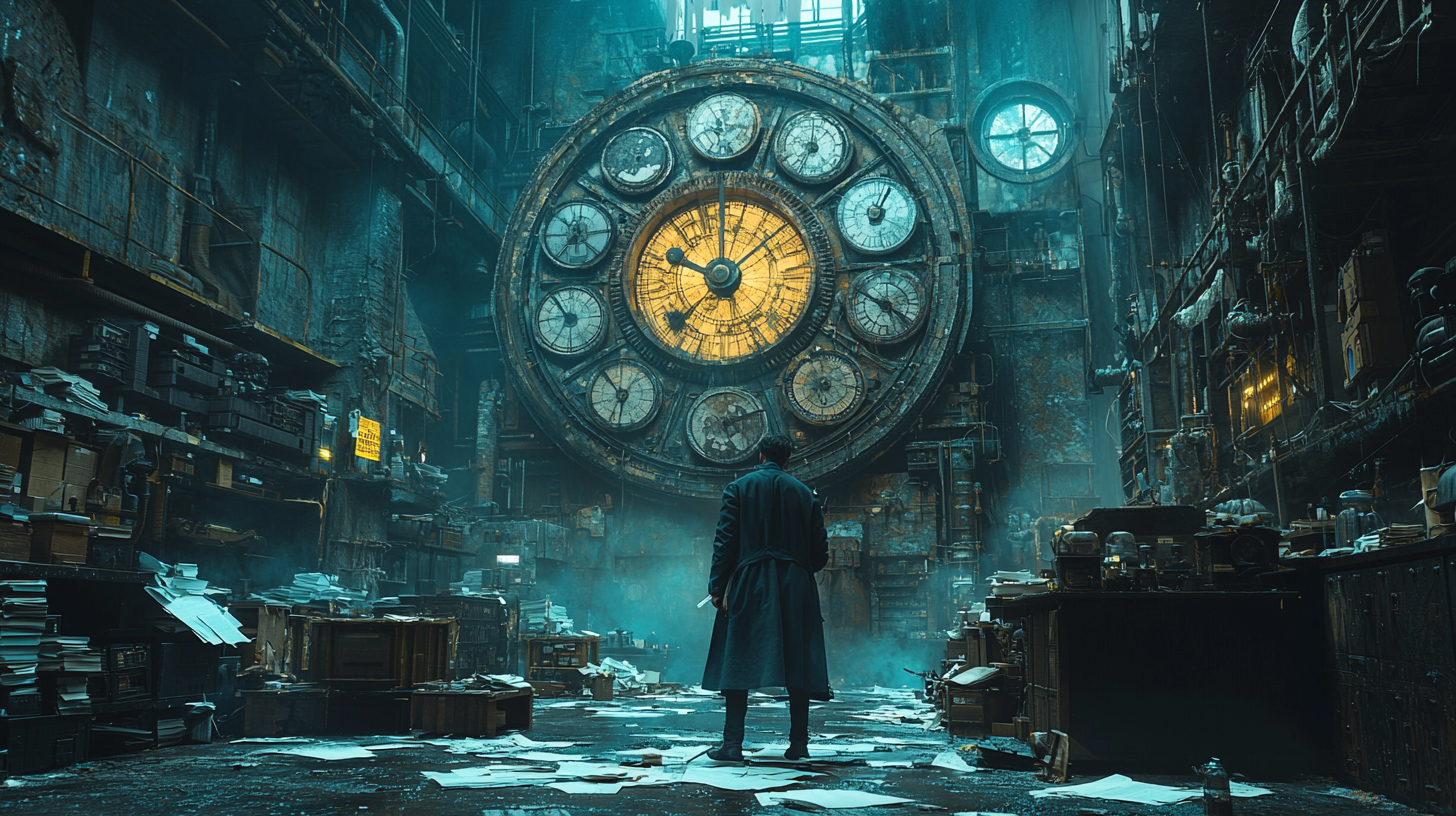
EPISODE 2 – THE MACHINERY OF WORTH
“You weren’t hired. You were harvested.”
How did we end up measuring our lives by productivity? This episode exposes how the grind became morality, how exhaustion became status, and how the machine consumes bodies, dreams, and futures without blinking.
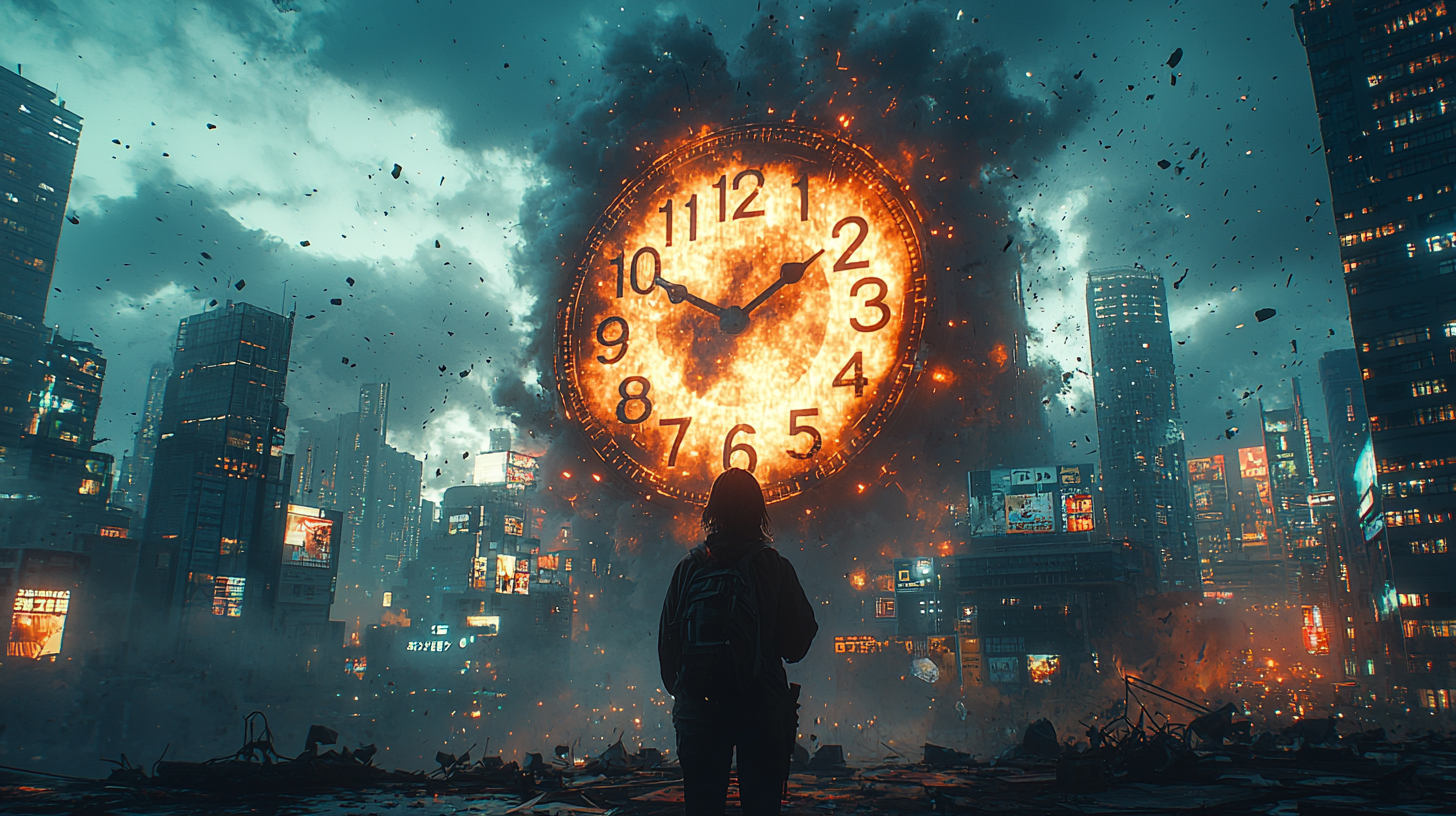
EPISODE 3 – THE MOMENT IT CRACKED
“The hustle cracked first in the quiet places we tried to ignore.”
Every runner feels it the moment the finish line starts looking like a lie. This episode captures the first fracture: the internal wake-up call when success feels hollow, and the race stops making sense.
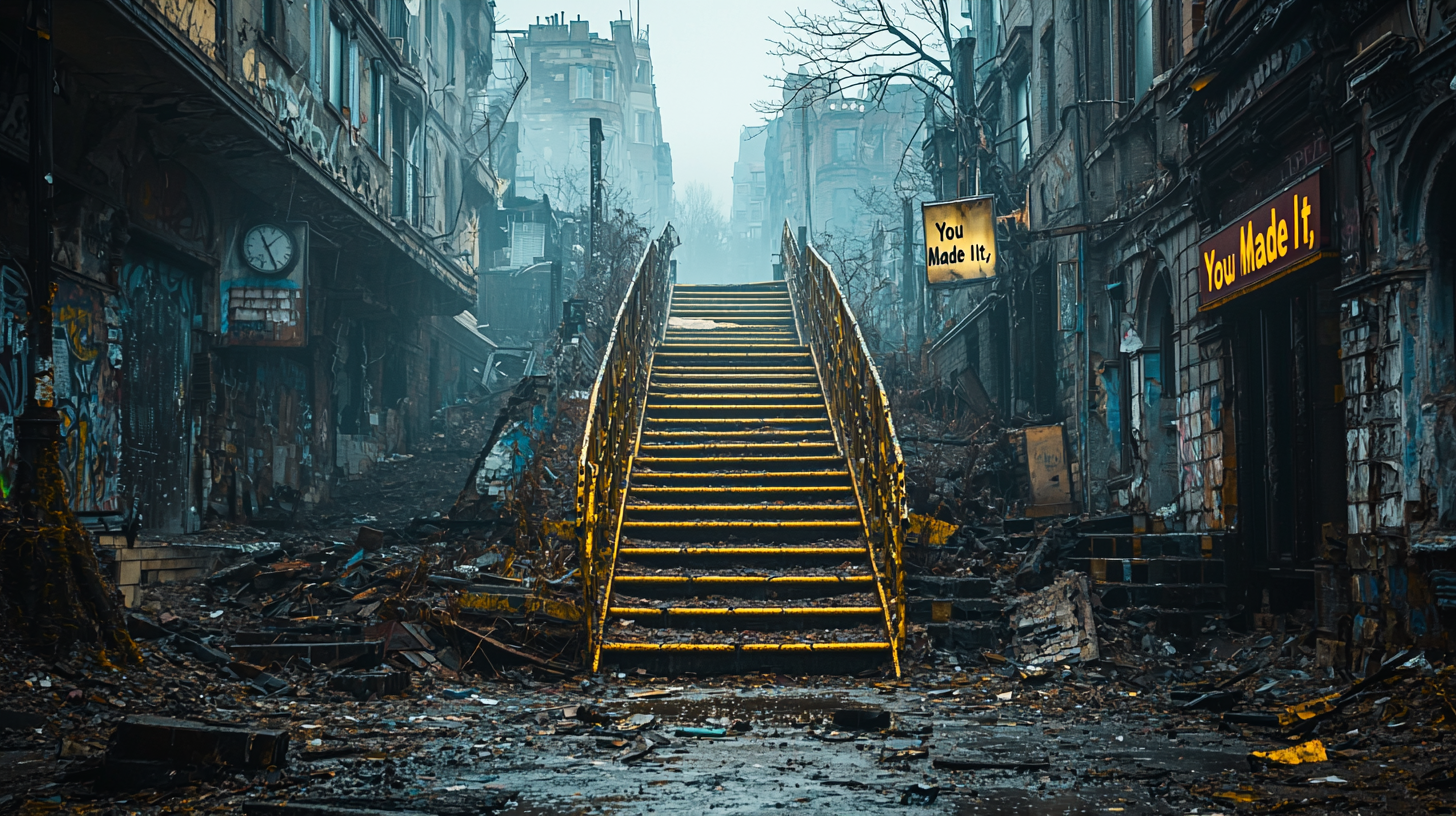
EPISODE 4 – THE ILLUSION OF "MAKING IT"
“You don’t reach the top. You just find a faster treadmill.”
What happens when you get everything you thought you wanted and it still doesn’t feel like freedom? This episode unpacks the illusion of “making it”—why achievement doesn’t heal emptiness, and why the real prize was never what they told us.

EPISODE 5 – WHY THEY SOLD IT TO US
“Tired people don’t rebel. Tired people keep buying.”
The grind was no accident. This episode uncovers why hustle culture was manufactured—to profit from our exhaustion, to control through scarcity, and to protect a system built on endless extraction of human life for corporate gain.

EPISODE 6 – HOW WE BUILD DIFFERENT
“Real growth doesn’t sprint. It roots.”
We can’t hustle our way to healing. This episode shows what it means to build differently—slowly, deliberately, on foundations that honor presence, rest, and choice over performance.

EPISODE 7 – FREEDOM WAS ALWAYS THE POINT
“The life you wanted wasn’t behind the finish line. It was under your feet the whole time.”
This isn’t a story about quitting. It’s a story about remembering. About reclaiming the freedom we were born with—the time, presence, and power to build lives too deep and too free for the system to digest.
"Truth survives because of you. Make your gift count."
Every dollar helps us fight misinformation and dig deeper into stories that matter.
Algorithms, Attention, and the New Economic Divide
The Ripple Effect
-News and Commentary-
Today in The Ripple Effect, we are pulling back the curtain on the quiet power reshaping modern life. It is not politicians. It is not CEOs in corner offices. It is algorithms. Invisible, ever-evolving, they decide what you see, what you buy, who you connect with, and even how you think. And if attention is the new currency of this era, algorithms are the private banks controlling the flow. They are reshaping the economy, relationships, and personal opportunity itself, often without us realizing it.
The Birth of the Algorithm Economy
When the internet first opened to the public, it felt like a free marketplace of ideas. Websites competed for traffic. Forums built communities. Search engines tried to show you the best answer to your question. But as the internet scaled, the noise became deafening. Companies needed ways to filter, rank, and monetize information. Enter the algorithm, a set of instructions designed to predict and control user behavior at massive scale.
Early algorithms were simple. They ranked based on relevance, timeliness, or popularity. But over time, they evolved. They stopped just organizing information. They started shaping it. They learned not just what you clicked, but how long you lingered, what you hovered over, what made you emotional, angry, afraid, excited. The goal shifted from helping you find what you wanted to keeping you engaged for as long as possible, because engagement meant profit.
Attention became the product. Data became the raw material. Behavior became the currency.
Economic Winners and Losers
In this new ecosystem, not all creators, businesses, or individuals are treated equally. Algorithms reward content that triggers strong reactions. Outrage, controversy, spectacle, these travel faster and farther than nuance or thoughtfulness. Small businesses, artists, journalists, and independent thinkers find themselves trapped in a system where visibility depends on conforming to whatever the algorithm favors at any given moment.
Meanwhile, giant corporations and influencers with the resources to game the system, pay for ads, or manipulate metrics rise to the top. This creates a digital feudalism where a few mega-platforms and high-visibility accounts dominate attention, while everyone else fights for crumbs.
It is not a meritocracy. It is not a free market. It is an invisible hierarchy engineered by code you cannot see, written by people you did not elect, optimized for goals you did not choose.
Relationships Under Strain
It is not just businesses or creators feeling the pressure. Algorithms have quietly reshaped human relationships. Dating apps filter potential partners based on swipes and shallow preferences. Social media platforms prioritize posts that are likely to provoke reactions, even if those reactions are rooted in division or envy. Friendships get reduced to likes, comments, and birthday reminders. Political beliefs harden into echo chambers. Community bonds, which used to be based on geography, shared experiences, and real conversations, get replaced by algorithmic tribes.
The more you engage with a certain type of content or group, the more the algorithm feeds you the same, reinforcing your views, isolating you from other perspectives. It is easier than ever to connect, but harder than ever to connect meaningfully.
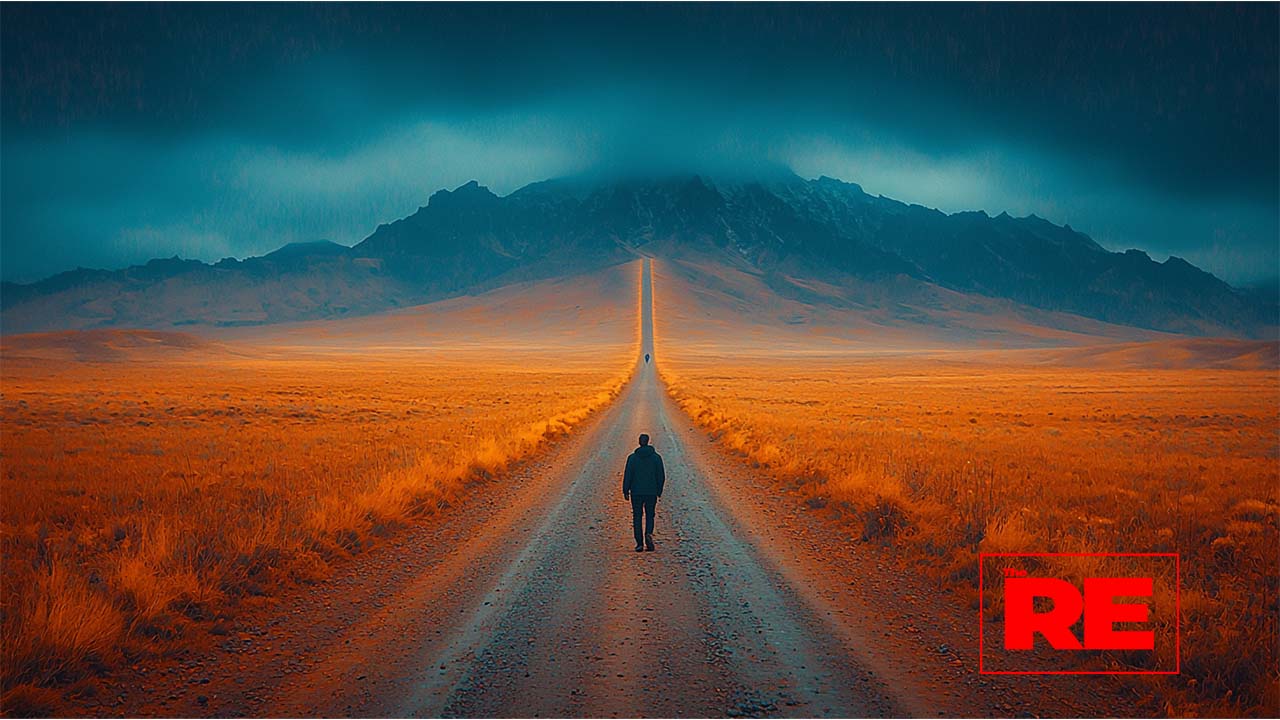
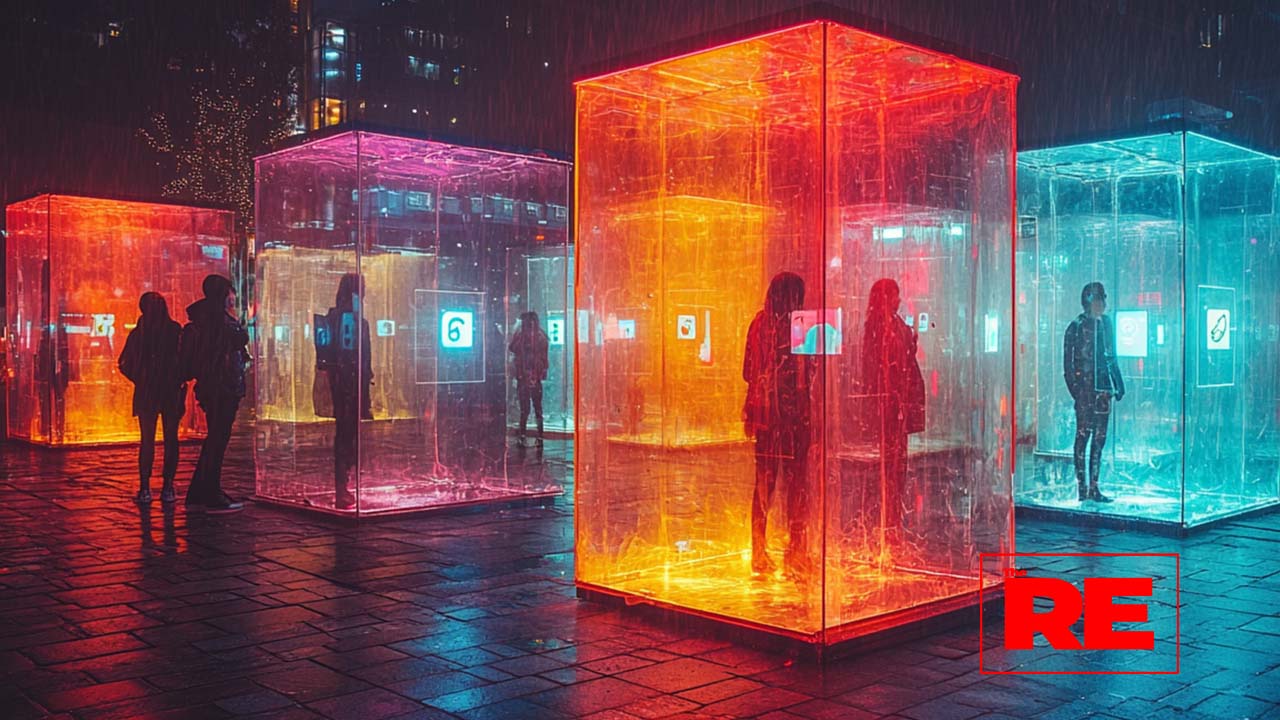
The Silent Economy
What makes this shift so dangerous is that it is largely invisible. You do not see the deals being made behind the scenes when a platform changes its algorithm. You do not see the way small businesses are wiped out because a tweak in Facebook’s feed ranking cuts their traffic by eighty percent overnight. You do not see the long tail of creators burning out because they have to produce ever more extreme content just to stay visible.
Traditional economies have regulations, oversight, debate. Algorithmic economies do not. They are proprietary, secretive, and global. A decision made in a boardroom in California can reshape political discourse in India, financial behavior in Brazil, or mental health trends in Nigeria. No borders. No warning. No accountability.
The Human Cost
The economic divide created by algorithms is not just about money. It is about opportunity. It determines who gets seen, who gets hired, who builds an audience, who gets funded, who finds community, and who gets ignored. For young people especially, growing up in this landscape means learning that success is not necessarily tied to skill, integrity, or hard work. It is tied to visibility. And visibility is tied to playing by rules you do not set and often cannot even understand.
Mental health suffers. Anxiety rises. Comparison becomes a daily ritual. Ambition gets warped into a constant hustle for attention, often at the expense of genuine learning, creativity, or connection.
Can We Take It Back
The good news is that awareness is rising. Movements for platform transparency, algorithmic accountability, and digital sovereignty are growing. More users are questioning how their feeds are curated, why certain voices are amplified, and whether constant engagement is worth the personal cost.
Some are turning to alternative platforms built on open source principles, decentralized networks, or chronological timelines. Others are reclaiming their time and attention by setting boundaries, curating their digital diets, and refusing to let algorithms dictate their emotional states.
It will not be easy. The platforms that profit from your attention have no incentive to change voluntarily. But every act of conscious engagement, every demand for transparency, every choice to prioritize real relationships over algorithmic ones, is a small rebellion against a system built on engineered addiction.
The Ripple Forward
The stakes are bigger than just personal well-being. In a world where algorithms control attention, and attention controls influence, the health of democracy itself is on the line. If we want an economy that rewards real value, a culture that fosters real connection, and a society that honors real truth, we have to wrestle power away from the invisible hands shaping our digital lives.
In the end, the most radical thing you can do in an attention economy is simple. Pay attention on purpose. Decide who and what is worth your time. Invest your focus like it is the rarest currency you own. Because it is.

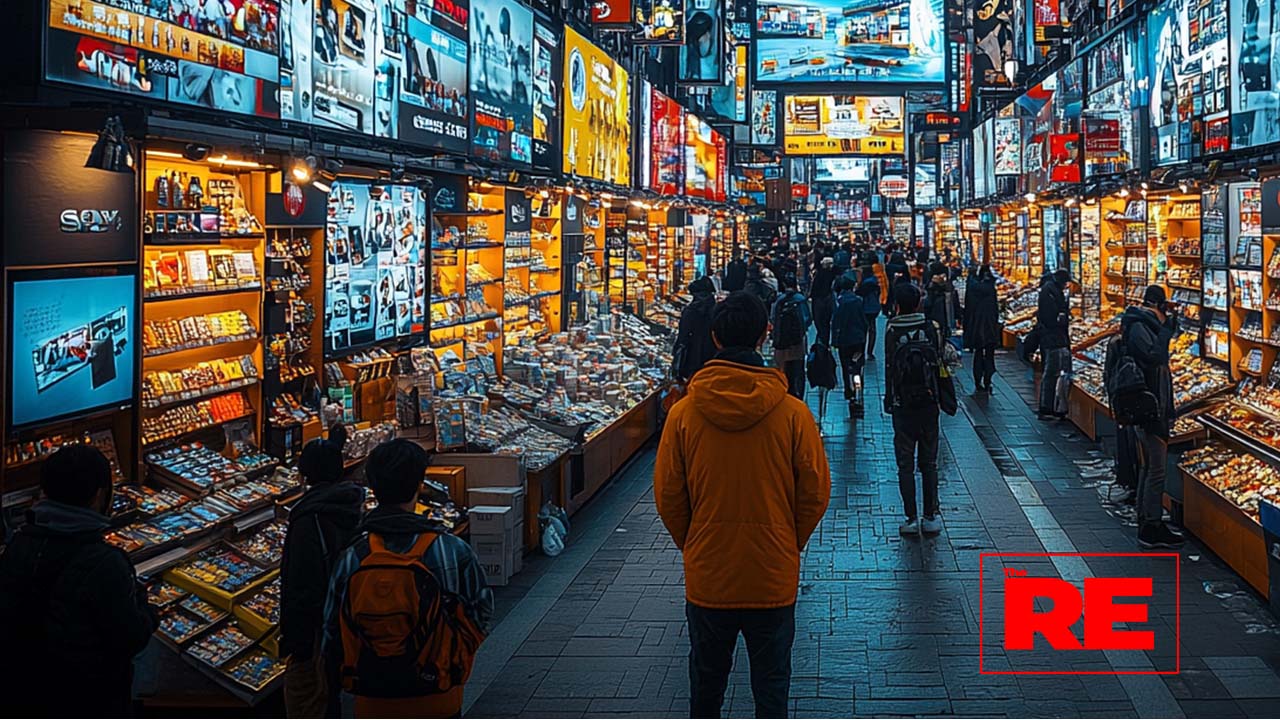
The Myth of the American Middle Class
Today in The Ripple Effect, we are unpacking one of the most durable and dangerous stories in American life, the idea of a stable and thriving middle class. For decades, it has been treated as both a reward for hard work and a birthright of American citizenship. But underneath the slogans and the nostalgia, there is a harder truth. The middle class was never a guarantee. It was a temporary construction, a carefully engineered outcome of specific historical forces that have long since disappeared.
The Birth of a Temporary Dream
After World War II, the United States emerged as the only major industrial power untouched by the devastation of war. Europe and Asia were rebuilding from rubble while American factories boomed. Soldiers returned home to a government ready to invest in them through the GI Bill, offering cheap loans for education and housing. Wages were strong. Unions were powerful. Corporate profits were high but heavily taxed. The economy grew, and with it, so did the idea that a normal life included a home, a car, a vacation, and a pension.
But even during its peak, the American middle class was never universal. Redlining locked Black families out of homeownership. Women were pushed into unpaid domestic roles. Immigrants and minorities were often excluded from the most lucrative sectors. The system was tilted, but it was broad enough to create the illusion that prosperity was possible for most.
The Cracks Begin
By the 1970s, the pillars that supported the middle class started to crack. The oil crisis exposed America’s economic vulnerabilities. Inflation spiraled. Globalization meant factories could move where labor was cheaper. Deregulation under Presidents Carter and Reagan shifted power away from workers and toward corporations. Unions weakened. Real wages stagnated even as productivity kept climbing.
At the same time, something more invisible was happening. The rise of computers and networked information systems began to change what value even meant. Wealth was no longer just measured in products made or crops harvested. It started shifting into data, software, financial services, and intangible assets. The economy was digitizing, but the story of the middle class stayed frozen in a 1950s time capsule.
The New Economy and the New Divide
By the 1990s and early 2000s, the transformation was complete. Manufacturing was gutted. The biggest fortunes were built not on assembly lines but on platforms. Amazon, Google, Facebook, Apple, Microsoft, these companies did not produce goods in the traditional sense. They controlled information, access, and attention.
This mattered because wealth creation shifted away from broad-based employment toward highly concentrated tech monopolies. A handful of engineers, designers, and executives made fortunes. Gig workers and service employees fought for scraps. The old middle class pathways, the ones that ran through unionized factories, affordable education, and steady promotions, collapsed into unstable contracts, freelance gigs, and digital hustle culture.
Information became the new raw material. Platforms became the new factories. Algorithms became the new foremen, deciding who got seen, who got paid, and who got left behind.
Debt and Illusion
Even as these structural shifts hollowed out economic security, the cultural image of the middle class stayed alive through another tool, debt. Easy credit replaced rising wages. People bought homes they could not afford. They paid for college degrees with loans they could barely repay. They masked economic instability with mortgages, car payments, and endless monthly subscriptions.
The financial crisis of 2008 ripped the mask off for a while. Millions lost homes, jobs, and savings. But instead of building something different, the system rebooted with even more inequality baked in. Wall Street got bailed out. Tech platforms expanded. Workers got lectures about resilience and entrepreneurship.

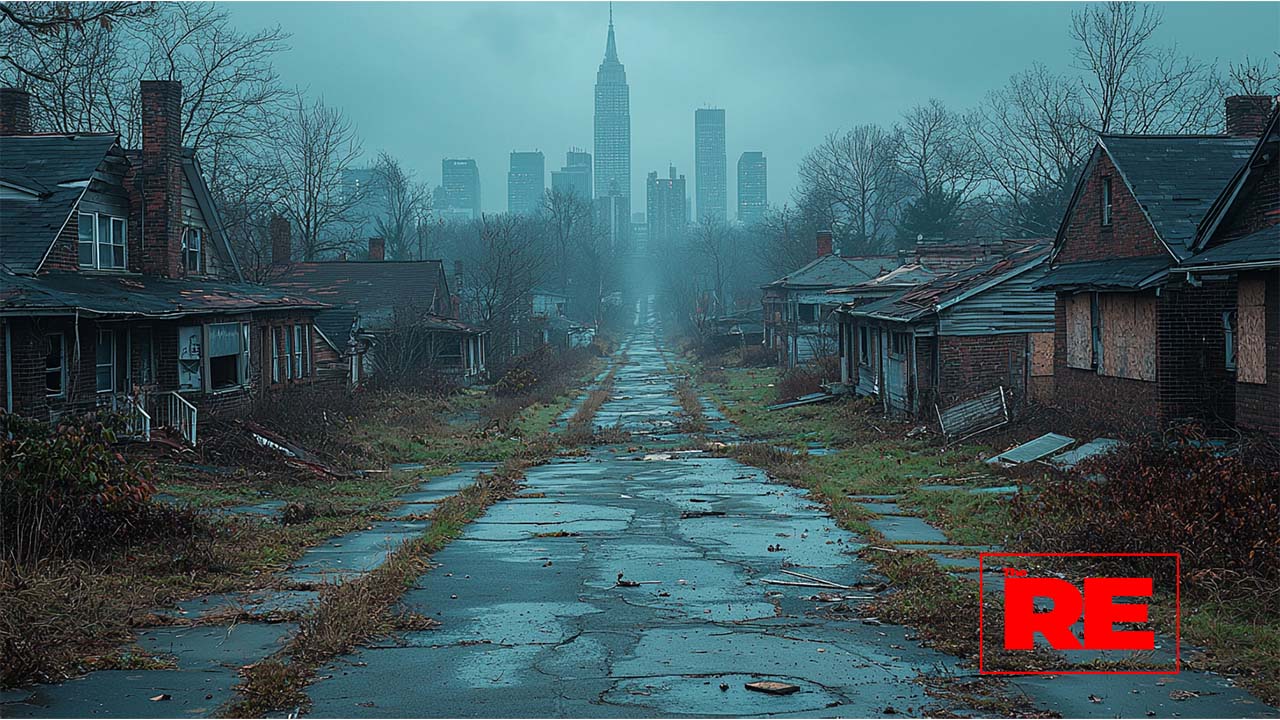

The Role of Information Control
The new middle class myth is no longer just about material goods. It is about managing perception. Social media platforms reward curated lives. News outlets reinforce tribal identities. Political campaigns sell nostalgia packaged as hope.
Algorithms determine what you see, what you believe, and what you aspire to. The dream is still sold daily through Instagram filters, YouTube ads, and LinkedIn posts about personal branding. But it is hollow. A shrinking number of people control a growing share of wealth, influence, and opportunities. The rest are left chasing a promise that was never designed to be kept.
The Real Ripple Effect
When the middle class shrinks, democracy weakens. Economic stability is not just about comfort. It is about the ability to participate meaningfully in civic life. It is about time to vote, time to volunteer, time to think beyond survival.
When the middle class becomes a myth, trust erodes. People retreat into tribes. They seek scapegoats. They abandon institutions. They look for simple answers to complex problems, often at the cost of freedom and solidarity.
The Future We Are Building
The real question is not whether the middle class will come back. It will not, at least not in the old form. The real question is whether we are willing to stop chasing a ghost and start imagining new models of stability, dignity, and opportunity that match the realities of a digital, globalized economy.
Local economies, worker cooperatives, universal basic income experiments, platform cooperativism, these are not magic bullets. But they are attempts to grapple with a world where the old rules no longer apply.
Recognizing the myth is not defeat. It is a starting point. It is the first step toward building something real, something rooted not in nostalgia, but in reality.
The Algorithm
THE ALGORITHM – Series Overview
“What if the system that connects us was built to consume us?”
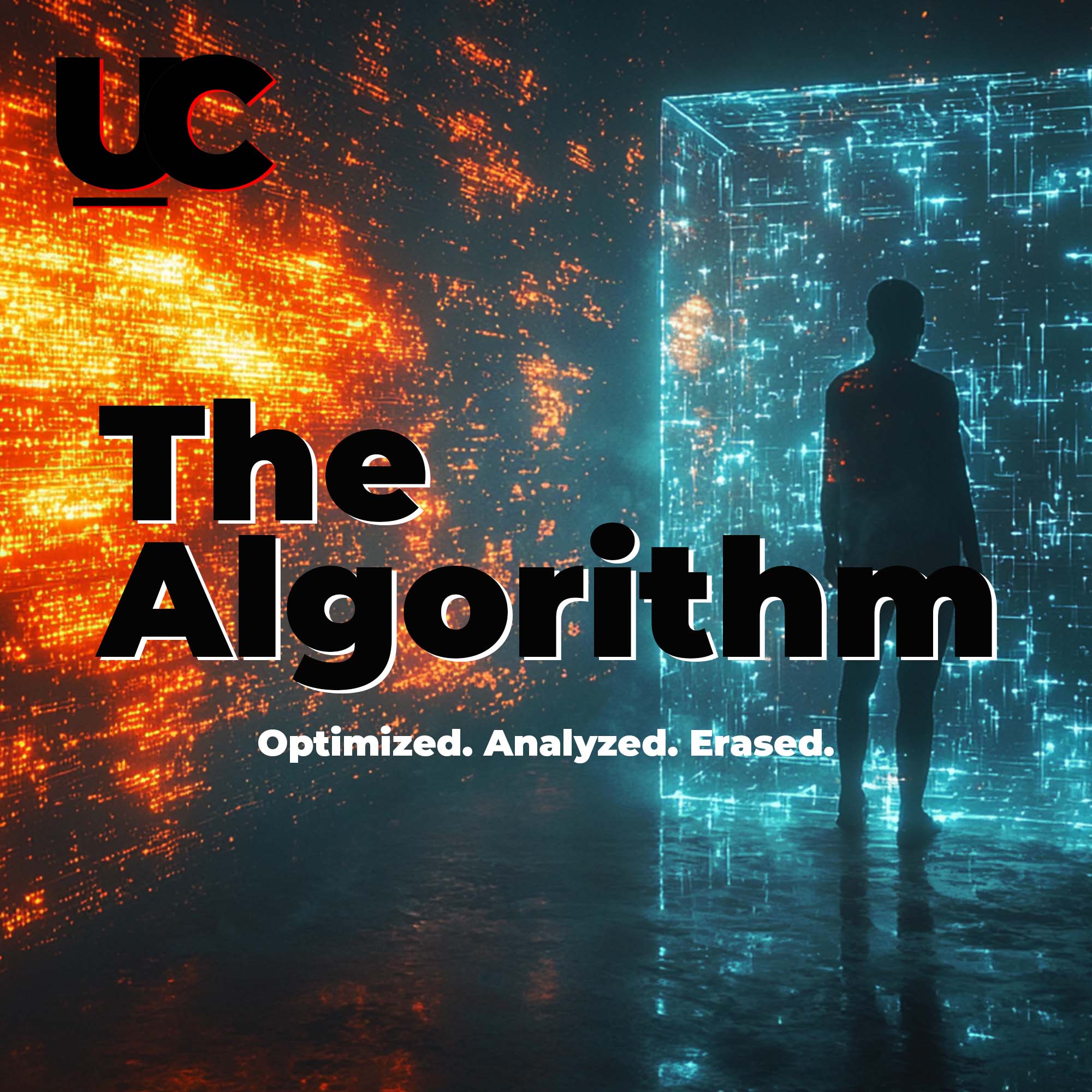
This is The Algorithm. A seven-part descent into the system behind the scroll. It’s not about how platforms work—it’s about how they shape us. Each episode cuts into a layer: identity, machinery, time, placement, intention, resistance, and reflection. This isn’t commentary—it’s excavation. You won’t find easy answers here. What you will find is space to finally ask: Who am I when no one’s watching? And who have I become when everyone is?

EPISODE 1 – WHO
“The version of me that performs isn’t always the version of me that’s real.”
Who am I online? Not the curated answer—the real one. The one hiding behind engagement metrics and highlight reels. This episode begins where every performance starts: identity. We dig into what it means to be visible, what we sacrifice for reach, and the versions of ourselves we’ve lost to the feed. When your reflection starts to speak in algorithm, do you recognize your voice—or do you recognize your strategy?
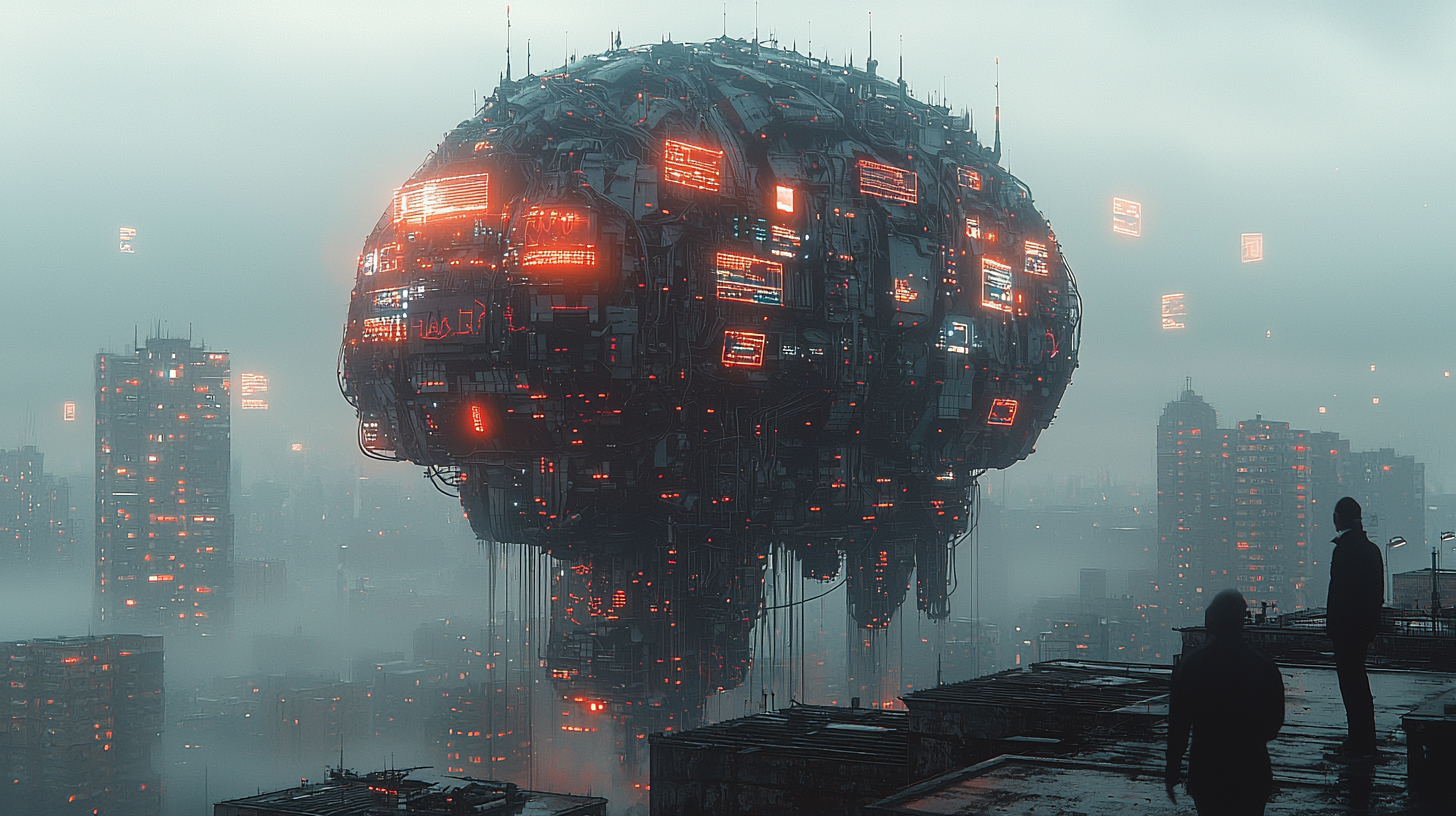
EPISODE 2 – WHAT
“It’s not just a feed. It’s a filter. A formula. A force.”
What is the algorithm? Not the code—the power. This episode breaks down the invisible infrastructure shaping what we see, what we miss, and what we start believing. From curated loops to predictive behavior, we unpack how the system doesn’t just respond to you—it rewires you. You thought you were exploring? You were being placed.

EPISODE 3 – WHEN
“We stopped documenting life. We started crafting performance.”
There wasn’t a moment. There was a shift. This episode explores when everything changed—when social platforms became stages and timing became survival. From the quiet collapse of organic connection to the rise of curated outrage, we look back at the years where the world didn’t slow down… it sped up and hollowed out.

EPISODE 4 – WHERE
“You’re not wandering. You’re being placed.”
Where do we exist online—and who decides? This episode examines how algorithms control digital space. Visibility isn’t neutral. Presence isn’t earned. It’s granted. And if your voice doesn’t fit the mold, you’re buried—not banned, but pushed out of the feed and into silence. So we ask: if the platform isn’t for you, can you still belong inside it?

EPISODE 5 – WHY
“You are not the user. You are the usage.”
Why does the algorithm act the way it does? Because it was designed to. This episode is about profit disguised as personalization. It’s about the system’s quiet obsession with your attention—and how it feeds off your emotions like fuel. The system doesn’t care what you feel, as long as you feel enough to stay. Rage works. So does pain. So does loneliness. That’s not an accident. That’s the model.

EPISODE 6 – HOW
“You don’t have to disappear to resist. You just have to move differently.”
Now what? This episode explores how we move through the algorithm without losing ourselves. It’s not about deleting your presence—it’s about reclaiming it. Posting with purpose. Creating without chasing. Protecting your pace in a culture that monetizes burnout. This is the blueprint for staying human in a system built to flatten you.

EPISODE 7 – CONCLUSION
“You don’t have to disappear to resist. You just have to move differently.”
This is the breath after the breakdown. The exhale after the noise. The final reminder that you are not here to be digested. You’re not a brand. Not a trend. Not a story they can spin. You’re a presence. A human. And you still get to decide how you move, what you share, and who you are outside of the feed. The system isn’t yours. But your voice still is.
"Truth survives because of you. Make your gift count."
Every dollar helps us fight misinformation and dig deeper into stories that matter.
A Future Built by Hands That Aren’t Ours
The Ripple Effect
-News and Commentary-
Today in The Ripple Effect, we are discussing a quiet shift that just got real loud. Last week, news broke out of California that a group of humanoid robots—yes, actual robots—are now working side by side with humans on the assembly lines of an auto shop. These aren’t science fair prototypes or PR stunts. These are full-scale, functioning mechanical workers, designed by a company called Figure, now standing shoulder to shoulder with real people, building real things, on real factory floors.
And yet, there wasn’t a national headline in sight. No panic. No protests. Not even a prime-time debate. Because unlike most major tech moments, this one doesn’t feel like a boom—it feels like a shift. A quiet click. Like when the gears of history start turning again and you realize: Oh… we’re not going back.
California wasn’t the first. It just made it real. Back in January 2024, BMW quietly announced a partnership with Figure to bring these humanoid machines into their production environment. The test site? Their plant in Spartanburg, South Carolina. The model? Figure 02—a 5-foot-6, 150-pound robot with two legs, two arms, and a brain powered by next-gen AI.
It doesn’t just look like us—it moves like us. Think: human-scale hands with 16 degrees of freedom per hand. Cameras, mics, sensors, and a nervous system of processors running three times faster than its predecessor. This robot can see, hear, and react. It can insert sheet metal into car chassis, work in tandem with humans, and adjust to real-time variables on the floor. It’s not just advanced. It’s autonomous.
But this isn’t a takeover story. It’s a growth story. Let’s pause here—because usually when robots come up, so does panic. The headlines scream automation, layoffs, AI stealing jobs, and dystopian futures. But that’s not where this episode is going. This isn’t a story about machines replacing people. This is a story about people evolving alongside machines.

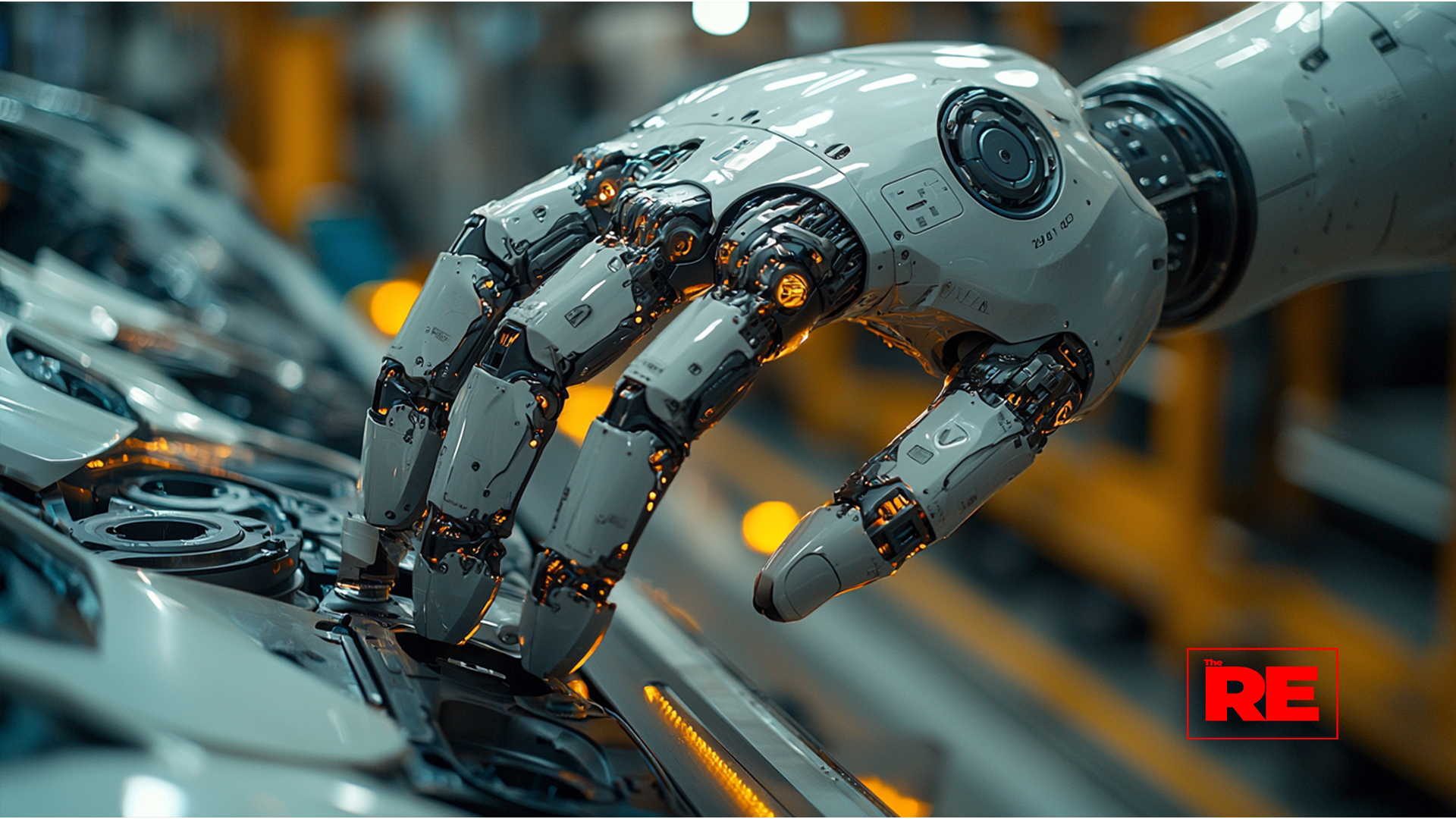
Because what’s happening in California—and before that, in South Carolina—isn’t the collapse of labor. It’s the next phase of work. And yeah, it’s different. But it’s not inherently destructive. If we do it right, it might be one of the most liberating shifts in human labor we’ve ever seen.
Think about it: why do we work? Why do we spend the best hours of our days doing tasks that are physically taxing, mentally draining, or straight-up dangerous? Because for the last hundred years, we’ve had to. Work was survival. We didn’t have a choice.
But what if the future of work isn’t about survival—it’s about service? What if, instead of humans bending over assembly lines, we trained machines to do that heavy lifting—literally—and we reoriented human labor toward innovation, community, care, and creation?
That’s not a fantasy. That’s where this is heading.
Let’s be real: Figure’s robot isn’t building Teslas in a solo act. It’s not making decisions, filing taxes, or raising kids. It’s bolted into a very specific lane—tasks that are unsafe, repetitive, or ergonomically damaging. In the BMW tests, the Figure 02 inserted sheet metal into a fixture—a job that requires high precision, but not high creativity.
And that’s the key. These humanoid robots aren’t here to take over your mind. They’re here to take over the tasks you shouldn’t be forced to do in the first place. Tasks that wear out joints, break backs, or dull ambition over time.
So no, this isn’t about job loss. It’s about job evolution. And for that to happen, we have to reshape what “valuable work” means in this country.
If humanoid robots are going to handle the grinding, high-repetition tasks on the floor, then the humans around them have to level up. That’s not optional. That’s survival. And that’s where education becomes the frontline.
We need to stop thinking of education as a pipeline to fill jobs—and start treating it like the foundation to redefine them. That means universal access to STEM, sure. But more than that, it means teaching problem-solving, critical thinking, ethics, and human creativity—because those are the things machines can’t replicate.
In this world, we need people who can operate, repair, and optimize these machines. People who can write the code that drives their logic. People who can set safety standards and ethical guardrails. People who can use freed-up time to solve real-world problems beyond the factory.
We also need leaders who can reimagine what a workforce even looks like when “work” stops being a matter of survival, and starts being a matter of contribution.
That’s why this Figure partnership matters. BMW didn’t just roll out robots and call it a day. They rolled them out in a controlled, intentional way—placing them in roles that complement human workers, not compete with them. They’re automating tasks that slow down production—not the people who bring it to life.

And that’s the blueprint. Robots should be treated like tools, not threats. Assets that support the workforce, not replace it. And if businesses are smart, they’ll realize something else too: the better trained your humans are, the more effective your machines become.
We’ve had revolutions before. The industrial kind. The digital kind. And yeah, they always come with some pain. But what makes this moment different is that we’re walking into it with foresight. We can see the direction. We know what’s coming. We have a choice.
This isn’t about fighting off automation with picket signs. It’s about demanding that automation works for us—not around us. And maybe, just maybe, it’s about redefining labor itself. Because if machines can build the cars, maybe humans can finally build the future.
If the first wave of robots hit the manufacturing floor like a warning shot, this next wave—humanoid, AI-enhanced, adaptable—is coming like a shift in the tide. And here’s the thing about tides: they don’t ask permission. They don’t wait until everyone’s ready. They rise.
So the question isn’t “Will robots take over?” It’s “Will we be ready for what they leave behind?”
Let’s talk readiness. Let’s talk education.
What we’re seeing unfold in California isn’t just a tech demo—it’s a mirror. It’s showing us what happens when progress moves faster than policy, faster than school curriculums, faster than public awareness.
These humanoid robots—like the Figure 02—aren’t here for fun. They’re being brought in because they can work longer, lift heavier, and follow precision tasks without fatigue. That’s not evil. That’s efficiency. And in a business sense, it makes total sense.
But what does it say about our system if we’re still preparing students for jobs that won’t exist by the time they graduate?
That’s the wake-up call. If we don’t start adapting how we teach, not just what we teach, we’re going to end up with a population that’s overqualified for the past and underprepared for the future.
We’re talking about STEM programs in elementary, not just high school. Coding, robotics, and systems thinking taught alongside reading and writing. Trade schools that train for automation management, not just legacy machines. Community colleges that pivot from diploma mills to innovation hubs.
Because if the robots are taking the wrenches, we need to hand humans the blueprints.
This isn’t just about training individuals. It’s about building systems that can keep up with the speed of change. Think about what a robot-filled auto shop actually needs: high-speed connectivity, advanced cybersecurity, specialized technicians, energy-efficient power grids, and ethical oversight bodies.
That means government can’t sit on the sidelines anymore. If we’re going to create a world where humans and machines work together, we need real investment in the infrastructure that supports that.
It’s not enough to say, “Learn to code.” You can’t code your way out of a system that doesn’t give you the tools, funding, or access to participate in the first place.
Let’s keep it real—businesses are moving faster than governments. Always have. But this tech boom we’re in now? It’s moving lightyears ahead of legislation. And if policymakers don’t catch up, they’re not just falling behind—they’re putting people at risk.
Because where there’s innovation, there must be protection.
We need federal standards for human-robot interaction in the workplace. Labor laws that redefine what it means to be “on the job.” Education reform that aligns with real-world demand. Data privacy protections for environments powered by AI. And maybe most of all… a national narrative that this isn’t scary. It’s necessary.
When we see robots walking factory floors, our first instinct shouldn’t be fear. It should be vision.
Now let’s hit something nobody really wants to touch: if robots are doing more of the labor… do humans still need to work? Short answer? Yes. But the long answer is more interesting. Because maybe we’ve been asking the wrong question. Maybe it’s not “What jobs will be left?” Maybe it’s: “What kind of society do we want to build with the time we gain back?”
If a robot can assemble a car, clean a warehouse, or prep an order—what does that free us to do?
We could focus more on education, arts, and caregiving. Invest in climate solutions, health innovation, or mental health services. Strengthen local economies through micro-enterprise and entrepreneurship. Volunteer more, parent more, create more, rest more.
But that future only works if we stop tying human worth to work output. We have to stop seeing labor as identity and start seeing it as opportunity. When effort isn’t required for survival, it becomes a choice. A contribution.
Figure’s humanoid robots aren’t a gimmick. They’re a glimpse. A glimpse of a world where technology supports humanity—not replaces it. A world where physical labor becomes optional. Where mental effort is redirected. Where human creativity, care, and consciousness are elevated above the grind.
But that only happens if we build a bridge between now and next—with policy, education, and real leadership. Because if we ignore it, we don’t get a utopia. We get chaos.
Every major leap in history—the plow, the steam engine, the internet—disrupted the way people lived and worked. But it also opened doors we didn’t know existed. This moment is no different.
The robots are here. They’re not marching in. They’re walking in—on two legs, built by us, powered by us, working for us… if we let them.
So the real question isn’t whether they’ll change the world. The real question is: will we change with them—or get left behind trying to defend a world that’s already gone?

"Truth survives because of you. Make your gift count."
Every dollar helps us fight misinformation and dig deeper into stories that matter.
Free to Speak, But Not Always Heard
The Ripple Effect
-News and Commentary-
“Today in The Ripple Effect, we’re discussing the difference between free speech—and being heard. In a world shaped by algorithms, the right to speak still exists. But what happens when your voice doesn’t carry?”
We often point to free speech as the signature of a functioning democracy. It’s cited, quoted, and defended across the political spectrum. But for all the emphasis placed on the right to speak, far less attention is given to the conditions under which speech is actually heard.
That distinction—between saying something and it being received—deserves a closer look.
Historically, speech in America has never existed on equal footing. Access, amplification, and consequence have always varied depending on who was speaking—and what they were trying to say.
During the Jim Crow era, the limits of speech were clear—but not equal. Laws shaped who could be seen, who could organize, and who had access to public discourse. Voices that challenged the dominant order weren’t just ignored—they were systematically constrained. What mattered wasn’t just the ability to talk. It was who could afford to be heard.
That context isn’t buried in the past. It lingers, reshaped by time and technology. Today, most platforms allow anyone to post, publish, and participate. The mechanisms of expression are widely available. But availability doesn’t guarantee visibility.
That’s where things get more complicated.
Modern digital platforms operate with systems most users never see. Algorithms decide which voices rise and which are left buried. The process is rarely personal—but it is patterned. And the outcomes, whether intentional or not, often mirror older dynamics in quieter ways. Some voices find reach. Others don’t.
That difference isn’t always tied to quality, truth, or relevance. It’s tied to how the system scores engagement—and how certain topics or identities are flagged, filtered, or deprioritized in the process. Posts addressing racism are more likely to be flagged. Videos documenting protest often lose visibility.
Accounts sharing firsthand experience with systemic issues sometimes disappear from timelines—not due to inaccuracy, but because the content is labeled as controversial, sensitive, or “less engaging.” This isn’t a dramatic claim. It’s a measurable trend. And trends—especially those that consistently impact certain communities—warrant scrutiny.
Because the question is no longer “Can you speak?” The question is “Will it travel?” And in a space where amplification is governed by algorithm, the path from voice to audience is not neutral.
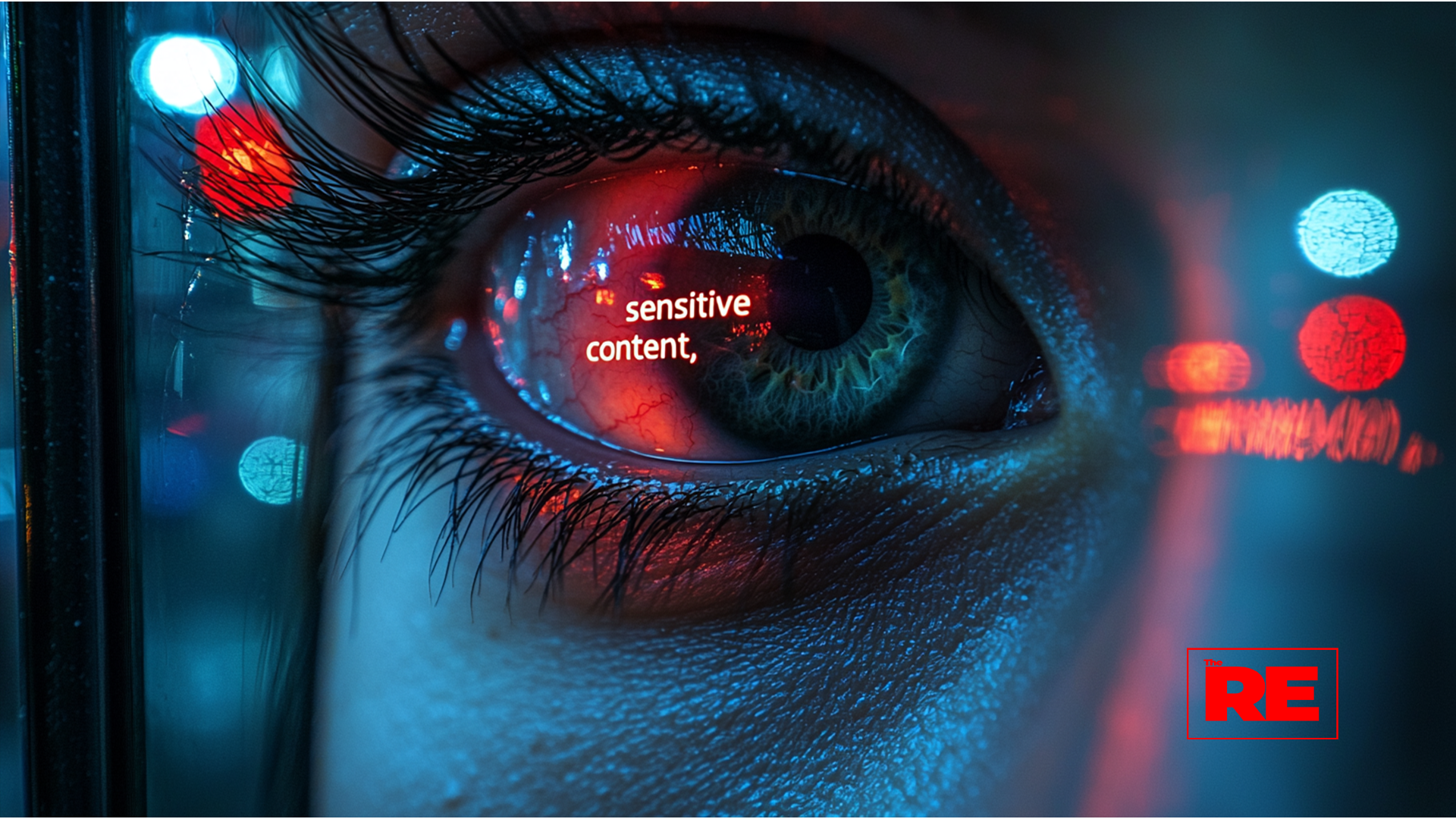

That’s not just a tech issue. It’s a civic one. We’re operating in a new structure—one where speech is free, but reach is managed. Where public discourse flows through private systems, shaped by priorities we don’t always understand and rarely influence. This isn’t about silencing. It’s about selective elevation.
And when elevation is decided by automated systems optimized for attention—not accuracy—the consequences are quiet but significant. What gains traction gets repeated.
What gets buried disappears. And in between, entire perspectives are lost—not through censorship, but through omission.
That’s the shift. Not from freedom to restriction—but from visibility to invisibility. From open dialogue to filtered resonance.
From speaking freely to struggling to be found. And that’s worth paying attention to. There’s a phrase often used when defending digital platforms:
“You can say whatever you want.” And that’s true. But it’s also incomplete. Because in today’s media ecosystem, the ability to speak doesn’t guarantee an audience. And in a world shaped by visibility, that difference defines who influences—and who fades out of frame. The modern public square is digital. But it’s not public. It’s owned, operated, and optimized for business models—not civic dialogue. And within that system, speech isn’t evaluated on merit. It’s filtered through metrics.
Algorithms prioritize what keeps users scrolling. That usually means content that is fast, reactive, and emotionally charged—not necessarily accurate, thoughtful, or rooted in lived experience. There’s no legal warning when your post is buried. No public record when your content is deprioritized.
No explanation when your reach suddenly drops. It doesn’t look like suppression. But functionally, it is. Control in the digital age doesn’t always silence you. Sometimes it just makes sure fewer people are listening. A livestream freezes just as momentum builds. A video disappears from searches without explanation. A controversial post is replaced by sponsored content that tells a safer story. The effect is subtle. The outcome is not. This kind of control is quiet. Intentional or not, it reshapes perception—while maintaining the appearance of openness. That’s the modern paradox: Platforms position themselves as neutral hosts, even as they engineer outcomes behind the scenes.
And in that gap between perception and practice, influence becomes privatized. Invisible decisions, built into the design of the system, determine who gets reach—and who gets rerouted. We were once told the internet would be the great equalizer. For a time, that was true. The early web allowed for decentralized storytelling, grassroots organizing, and real-time response. Movements like Ferguson and Standing Rock proved that visibility could be reclaimed from traditional gatekeepers.
But as platforms matured, so did their priorities. Engagement became currency. Virality became strategy. And the metrics shifted from “Is this important?” to “Will this keep users here longer?” That transition redefined the purpose of visibility. It’s no longer about relevance. It’s about retention. And in that equation, truth often loses. Because truth is rarely optimized for convenience. It doesn’t always fit into a headline. It doesn’t always trend. So when the system favors what performs—over what informs—the loudest voices win, not the most honest ones. And that has consequences. When accuracy is flagged and outrage is rewarded, we don’t get a better conversation. We get a louder one.
And in the volume, real issues get drowned out—not because they lack value, but because they don’t match the algorithm’s goals. That’s not just noise. That’s design.
Amplification has become the new battleground.
Not all voices are denied. But some are selectively elevated. And that distinction matters.
If a grassroots educator sees their content labeled “divisive,” while a major creator spreads misinformation with full monetization—what’s really being measured?
Not truth. Not impact. Just engagement. And when engagement is the metric, manipulation becomes strategy. That isn’t free speech. It’s performance.
What we’re witnessing isn’t the loss of voice. It’s the restructuring of attention. And that’s where the deeper risk lies.
Because if the cost of being heard is playing by rules built to reward extremes—then we haven’t expanded the conversation. We’ve distorted it.
So the question isn’t just “Can you speak?” It’s “Who controls the speaker system?” And if the answer keeps pointing back to a few corporations, a few codebases, a few unseen filters—then the public square isn’t as open as it claims to be.
This isn’t a call for chaos. It’s a call for clarity.
We need:
Transparency in how visibility is engineered
Independent oversight in high-stakes moderation
Digital spaces that support complexity—not just content that performs
Policies that treat algorithmic impact as part of public infrastructure
Because influence isn’t neutral when it’s driven by invisibility. And civic discourse can’t survive in systems built to reward noise over nuance.
The tools exist. The voices exist. The reach should too. The future we build shouldn’t just allow speech. It should protect its ability to matter.
Because in the end, freedom of speech isn’t the finish line.
It’s the starting point.
And if we fail to defend what comes next—visibility, reach, and impact—then we’ll keep mistaking the right to talk for the right to be heard.
One story. One truth. One ripple at a time. This is The Ripple Effect, powered by M3 Media Studios.
"Truth survives because of you. Make your gift count."
Every dollar helps us fight misinformation and dig deeper into stories that matter.

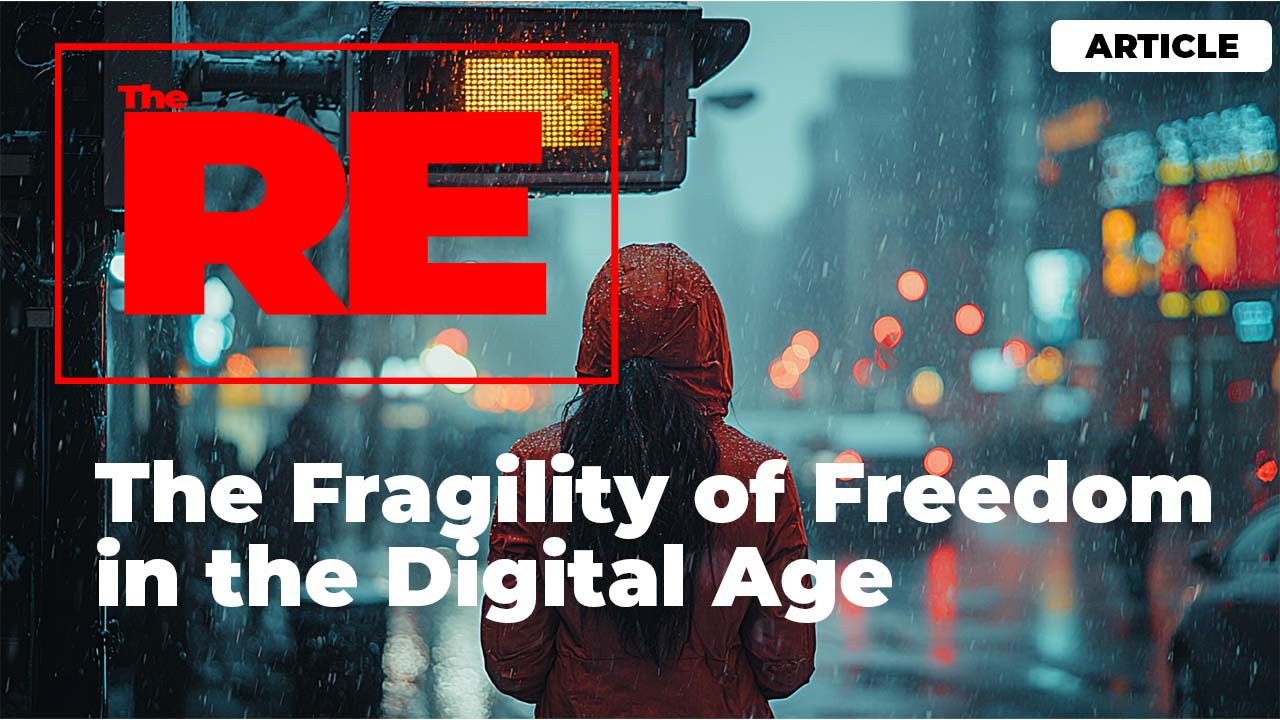
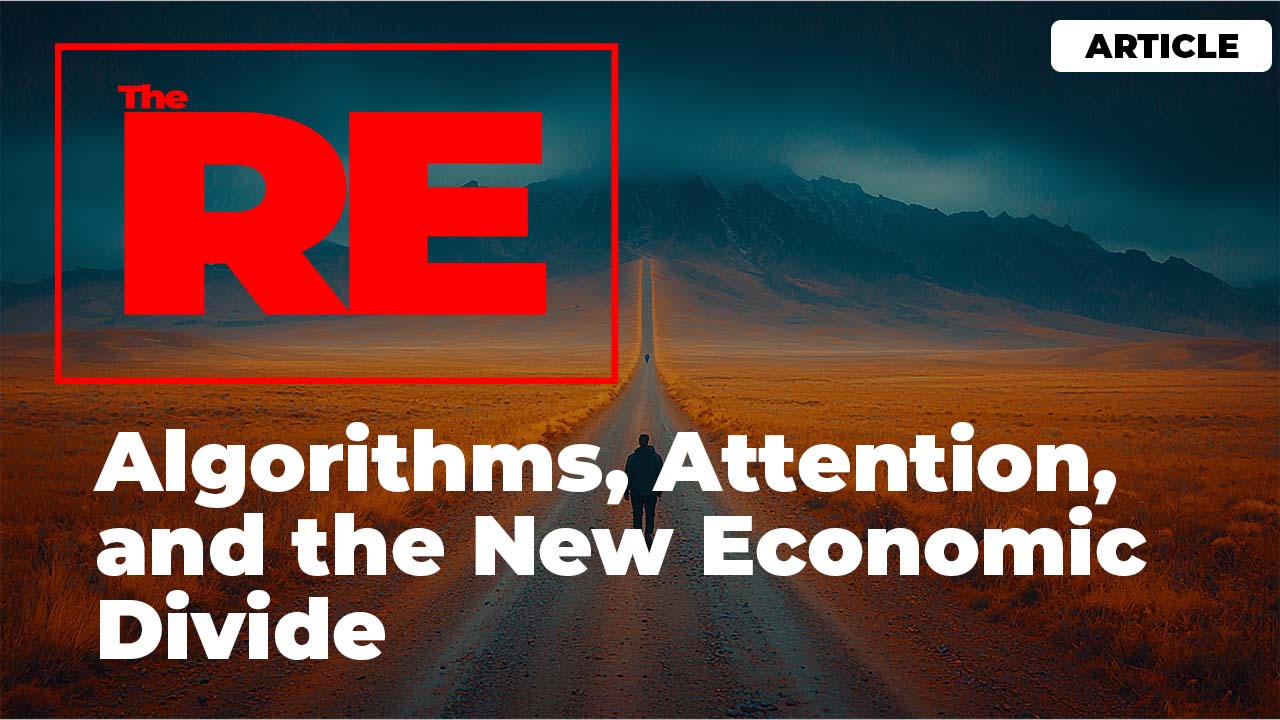
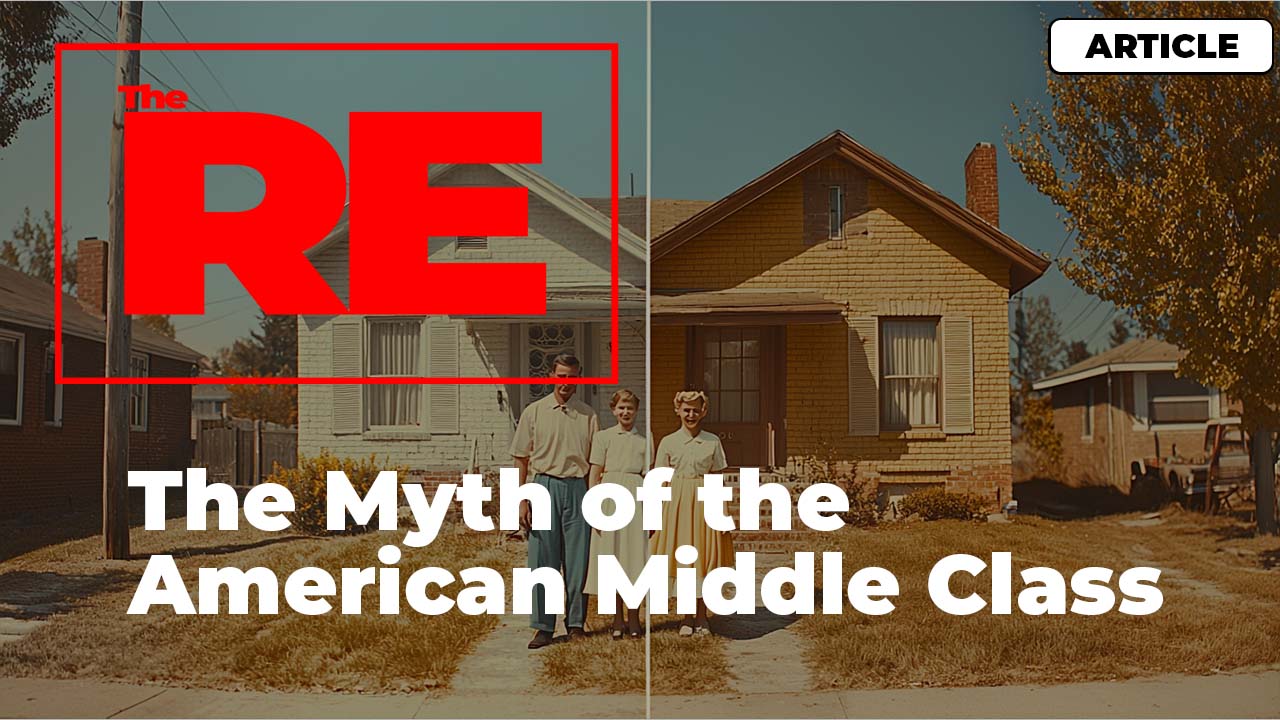
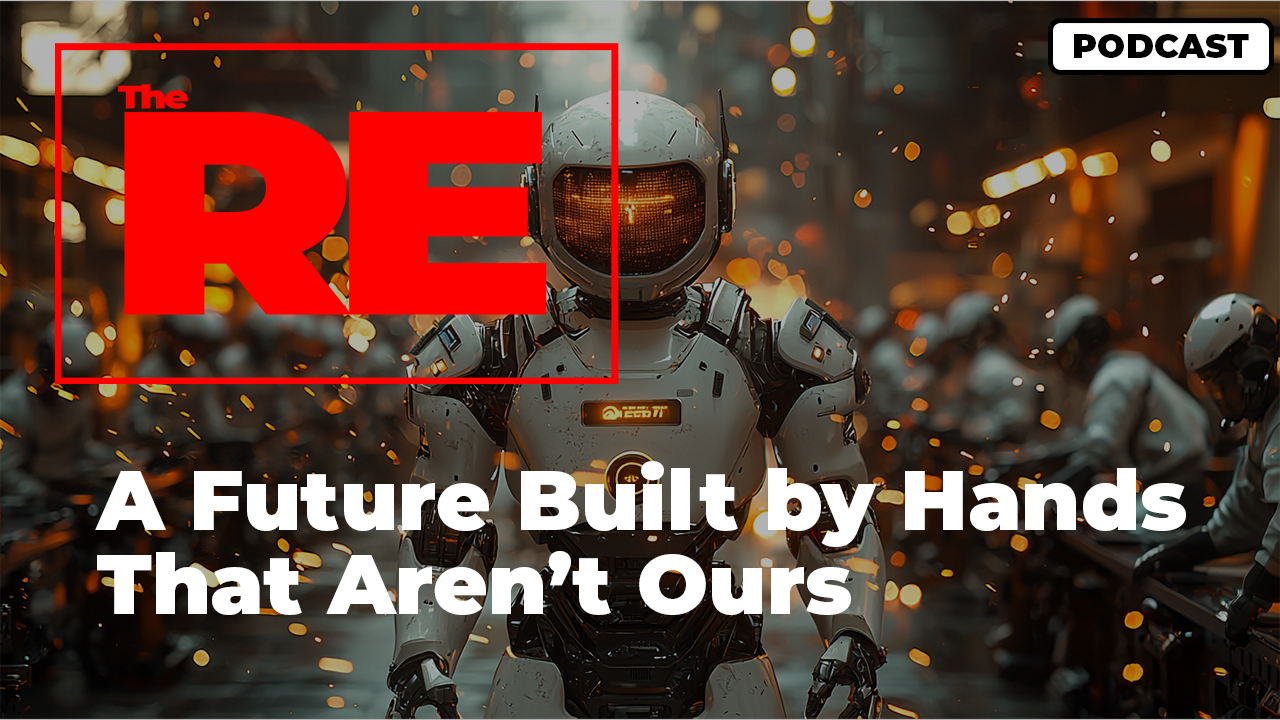
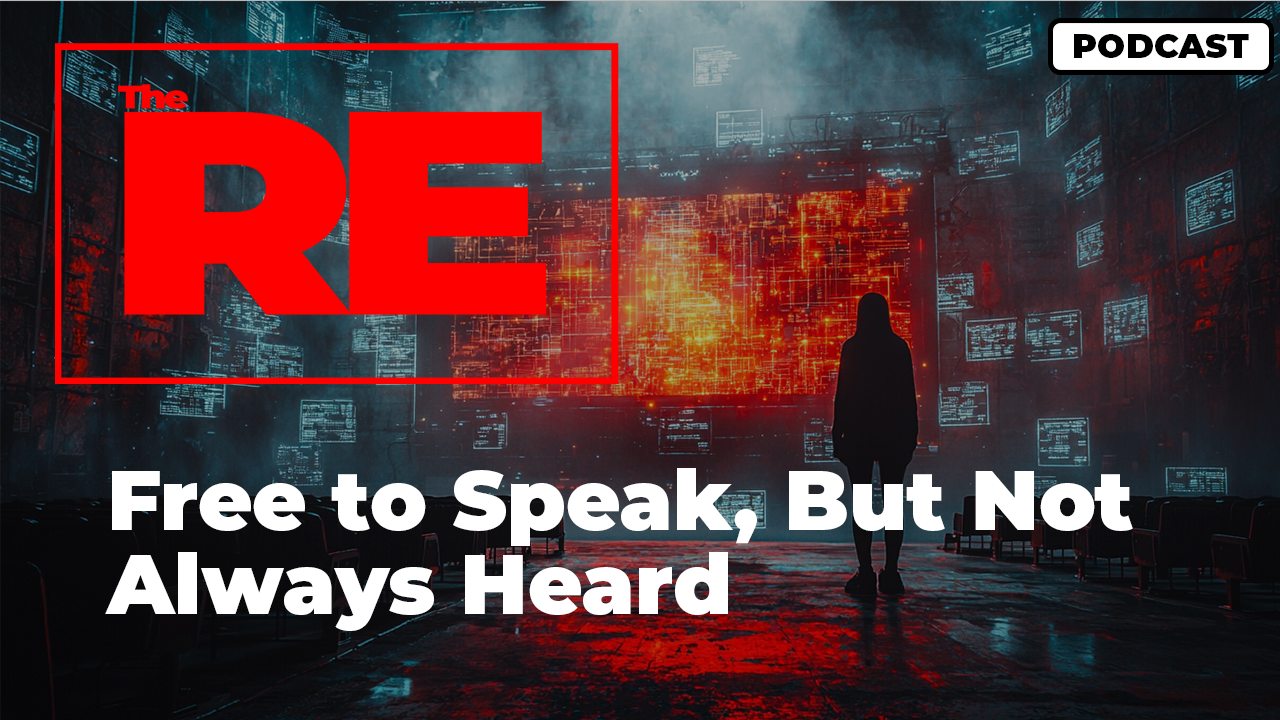

 and then
and then